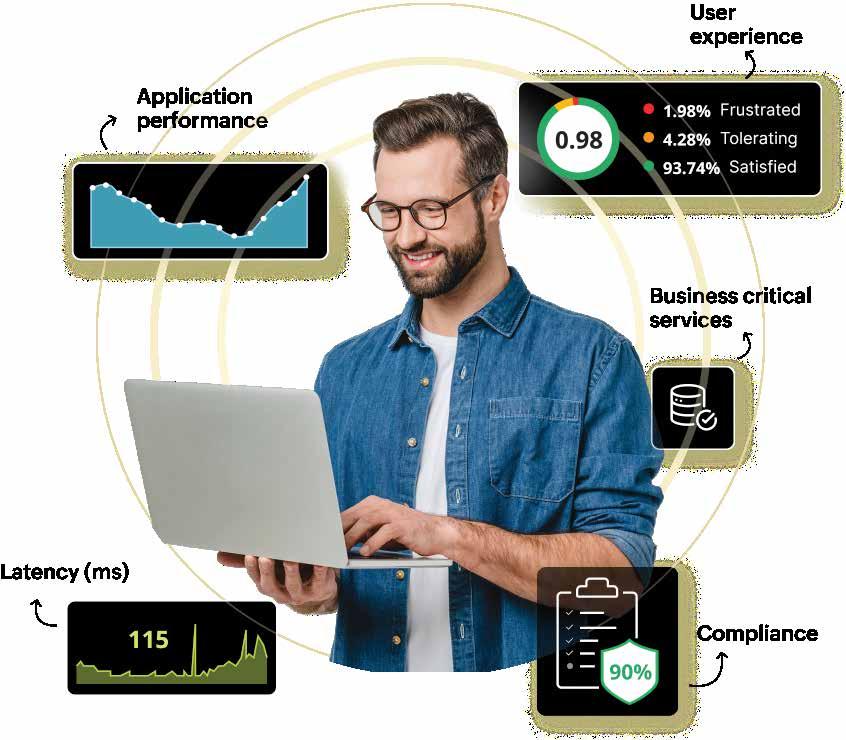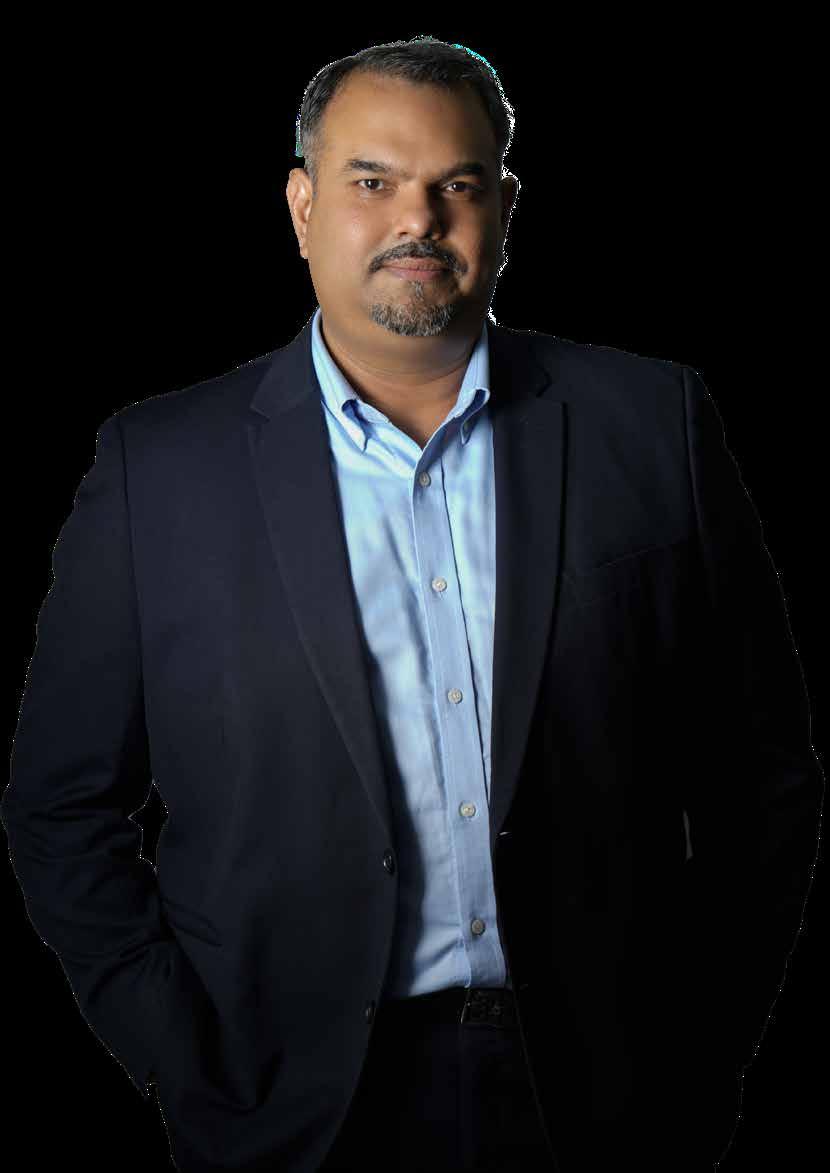


TEKNOWLEDGE AND KORE.AI PARTNER TO CLOSE THE ENTERPRISE AI EXECUTION GAP



KHAZNA TAPS NVIDIA TO ACCELERATE AI DATA CENTRE GROWTH IN MEA
EJADA SYSTEMS SIGNS STRATEGIC PARTNERSHIP WITH HUAWEI
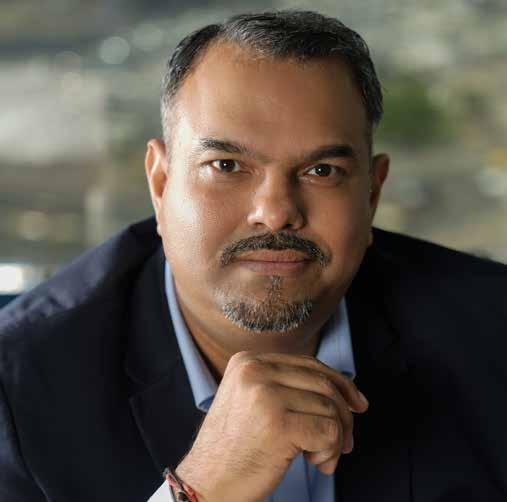




TEKNOWLEDGE AND KORE.AI PARTNER TO CLOSE THE ENTERPRISE AI EXECUTION GAP



KHAZNA TAPS NVIDIA TO ACCELERATE AI DATA CENTRE GROWTH IN MEA
EJADA SYSTEMS SIGNS STRATEGIC PARTNERSHIP WITH HUAWEI

THE RISE OF XAAS (EVERYTHING-AS-A-SERVICE)
UPSKILLING IN THE CHANNEL: BUILDING THE WORKFORCE OF TOMORROW
REWIRING CHANNEL MARKETING 12 22 28 33 37 39
BOLD VISIONS, STRONGER PARTNERSHIPS
SECURING CRITICAL INFRASTRUCTURE
DRIVING PROACTIVE CYBER RISK MANAGEMENT





Every once in a while, you pause to take stock, not just of where the channel stands, but where it’s headed. This June edition is that kind of moment.
What stood out to me over the past few weeks, especially at the Channel , is just how much the channel is shifting gears. We’re no longer just talking about transformation, we’re living it. From evolving business models like XaaS to the growing urgency around upskilling, the pace of change is rapid, but so is the ambition.
In this issue, we explore some of the critical conversations shaping today’s landscape, how partners are redefining value in an Everything-as-a-Service world, and why investing in skills today will determine success tomorrow.
At the heart of this edition is a story of growth and grit, told through the words of Jai Bhatia. It offers an inside look at how Newcom has evolved from its early roots into a modern-day channel powerhouse, a journey marked by purposeful expansion, agility, and a relentless focus on partner success. It’s a story that reflects the spirit of this thriving ecosystem.
We also shine a light on the people and partnerships driving this momentum. Industry leaders like Tanuja Randery of AWS share how the cloud giant is enabling regional growth through AI and national digital strategies. And we hear grounded, forward-looking perspectives from voices at Huawei, Nozomi Networks, Qualys, Riverbed, and Redington, each pointing toward a more collaborative, resilient channel future.
To top it all off, we relive the energy of the Channel Insights Summit 2025 the conversations, the connections, and the celebration of excellence. It was a glimpse of what’s possible when the channel comes together with purpose.
Sales Director
Merle Carrasco
merlec@insightmediame.com +97155 - 1181730
Administration Manager Fahida Afaf Bangod
fahidaa@insightmediame.com +97156 - 5741456
Operations Director
Rajeesh Nair
rajeeshm@insightmediame.com +97155 - 9383094
Designer Anup Sathyan
While the publisher has made all efforts to ensure the accuracy of information in this magazine, they will not be held responsible for any errors

Kore.ai announced a strategic partnership with TeKnowledge, a global provider of expert technology services across AI, Customer Experience, and Cybersecurity.
This partnership is designed to help enterprises bridge the widening gap between AI ambition and real-world execution, enabling them to scale AI rapidly and effectively, transforming scattered pilots into organisation-wide impact.
Kore.ai’s secure, scalable, and flexible agent platform enables enterprises to automate and enhance customer service, operations, and workplace productivity through intelligent, purpose-built AI solutions. Its open, enterprise-ready architecture

Khazna Data Centres (Khazna) announced it is collaborating with NVIDIA to build AI factories in the MEA region.
Following the high-profile visit of US President Donald Trump to the UAE, and the announcement of a planned 5GW UAE-US AI campus, the collaboration is another example of the deepening ties between the
region and US technology leaders in shaping the future of AI and digital infrastructure.
Through this collaboration, NVIDIA has certified the design of Khazna’s next-generation facilities to support the NVIDIA Blackwell architecture. Khazna’s ongoing and upcoming infrastructure developments will feature NVIDIA-ready blueprints as
ensures seamless integration and flexible deployment. TeKnowledge complements this with its AI-First Expert Technology Services model, combining strategic guidance, disciplined execution, and structured enablement to overcome delivery challenges and build lasting internal expertise. Together, Kore.ai and TeKnowledge deliver measurable business value and sustained innovation, balancing rapid transformation with control and longterm impact.
As AI becomes the single most transformative force in enterprise technology, organisations are moving from exploration to action. According to Gartner, by 2026, over 80 percent of customer service and support organisations will apply generative AI to improve agent productivity and customer experience. Yet many still struggle to scale beyond pilots and disconnected initiatives. The partnership between Kore.ai and TeKnowledge aims to solve this by offering an integrated approach— from platform to execution, from concept to capability.
standard, ensuring full compatibility with the latest GPU-accelerated workloads.
Khazna will design the majority of its future data halls with capacities of up to 50MW, developing individual AI clusters of up to 250MW. With many of these data halls situated in the planned UAE-US AI campus, this will place the UAE among the world’s most advanced AI infrastructure hubs. Khazna is also expanding rapidly across the Middle East, Africa and Europe, with plans to scale up to 1GW of capacity in countries such as France, Italy, Saudi Arabia, Egypt, Türkiye, and Kenya.
“The world is entering a new era of AI-driven innovation, and the UAE is uniquely positioned to lead. Our work with NVIDIA represents a bold step forward in delivering high-performance, future-ready infrastructure at unprecedented scale. It reinforces our support for the UAE’s ambitions to become a global AI leader,” said Hassan Alnaqbi, CEO, Khazna Data Centres.
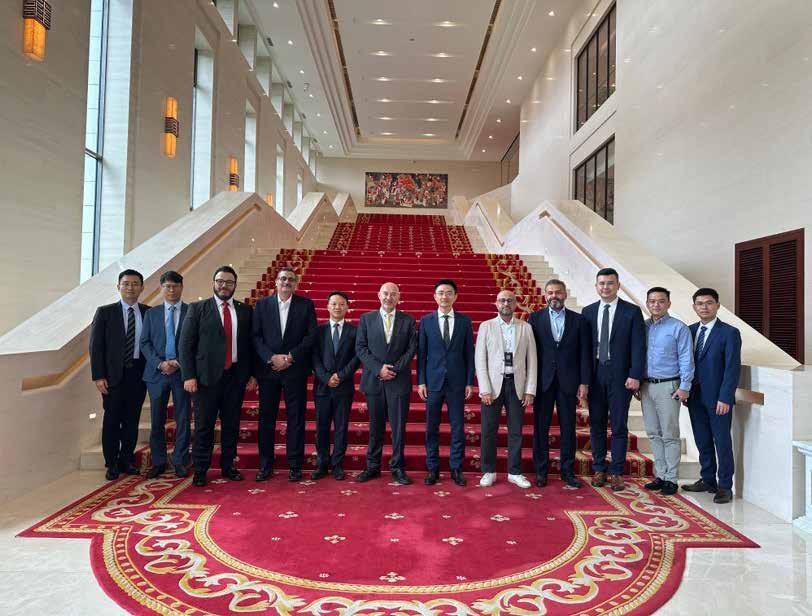
ejada Systems has announced a strategic partnership with Huawei. The partnership aims to develop customised artificial intelligence (AI) solutions that enhance the Kingdom’s digital infrastructure and empower key sectors.
The collaboration focuses on integrating Huawei’s advanced AI computing infrastructure with ejada’s sector-specific expertise in delivering tailored digital solutions across finance, government, and healthcare. The partnership builds on a strong track record of joint projects and technical integration between the two companies in the ICT sector, reflecting their shared
commitment to supporting the goals of Saudi Vision 2030 and advancing a sustainable digital economy.
An executive meeting was held between Fawwaz Abu El Nasr, CEO of ejada Systems, and David Shi, Vice President of the ICT Marketing and Solution Sales, Huawei, during which the partnership’s scope and strategic technical priorities were formalised.
Commenting on the occasion, Fawwaz Abu El Nasr, CEO of ejada Systems, stated: “Through this partnership, we aim to accelerate the development of localised AI solutions capable of addressing
the needs of vital sectors across the Kingdom. We believe AI will be a key pillar of digital transformation, and by combining our domain expertise with Huawei’s capabilities, we are positioned to deliver advanced solutions that improve service efficiency and foster innovation.”
This strategic agreement marks a new milestone in the ongoing collaboration between ejada Systems and Huawei, as both companies work to create tangible impact across Saudi Arabia’s digital infrastructure and support institutions in their journey toward smarter, more adaptive solutions.

Mindware has announced an expansion of its relationship with Autodesk. Already an authorised Autodesk distributor in the Levant and RoME (Rest of Middle East) regions, Mindware will now extend its expertise to the Gulf and Saudi Arabia, bringing Autodesk’s industry-leading solutions to a wider audience and accelerating digital transformation across the Architecture, Engineering, Construction and Operations (AECO), manufacturing, and media & entertainment sectors.
“This is a natural evolution of our long-standing relationship with Autodesk,” said Philippe Jarre, President, Mindware Group. “Our proven expertise in the Levant region has positioned us as a trusted partner, and we are excited
to bring that same commitment to the Gulf and KSA. With Autodesk’s world-class solutions and our extensive channel ecosystem, we are creating unparalleled opportunities for businesses to thrive in the digital era.”
Mindware will provide a comprehensive suite of valueadded services, including partner enablement, technical support, consulting, and go-to-market strategies to drive Autodesk adoption. The partnership will also focus on reseller training, industry-specific workshops, and live demonstrations, ensuring businesses can maximise the benefits of Autodesk’s AI-driven automation, cloud-based collaboration, and data-driven design capabilities.
Globally, Autodesk has been central to delivering the solutions that enable the AECO and manufacturing industry’s digital transformation. In the GCC, digital twin technology and smart infrastructure are gaining ground in the AECO sector, as well as in manufacturing, where AI-driven automation is revolutionising production processes.
“We are thrilled to strengthen our collaboration with Mindware and expand our reach in the GCC,” said Claudette Reuter, Senior Manager, Emerging Markets Channel Sales, at Autodesk. “With Mindware’s regional expertise and strong partner network, we are empowering businesses to embrace innovation, enhance efficiency, and drive sustainable growth.”
By expanding their relationship, Mindware and Autodesk are set to accelerate the digital transformation journey of the Gulf and KSA, enabling enterprises to design, build, and innovate with greater speed and intelligence.

ASBIS Group has announced a strategic distribution agreement with iiyama. This partnership, formalised at a signing ceremony, aims to enhance the availability of high-quality display technology in the Middle East and North Africa.
Under the terms of the agreement, ASBIS will distribute iiyama’s comprehensive range of products, including high-performance desktop monitors, gaming displays, advanced touchscreens, and large-format screens. This collaboration is set to boost access
to cutting-edge visual technologies across critical sectors such as education, retail, corporate environments, hospitality, and healthcare.
“We are excited to welcome iiyama into our network of world-leading vendors,” stated Hesham Tantawi, Vice President of ASBIS Middle East. “This collaboration underscores our commitment to delivering exceptional technology solutions to our partners and clients across the region. iiyama’s advances in display technology are well-aligned with our strategic objectives for market growth and digital transformation “
The collaboration will prioritise mutual growth through joint marketing efforts, dedicated channel support, and go-to-market strategies that address the unique needs of the MENA market. This alliance is expected to foster innovation, elevate customer experiences, and enhance the competitive positioning of both ASBIS and iiyama.
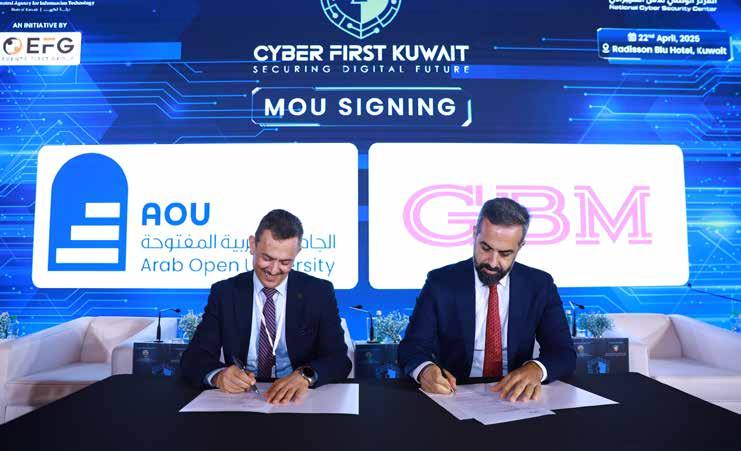
Gulf Business Machines (GBM) has signed a strategic Memorandum of Understanding (MoU) with the Arab Open University (AOU), focused on bolstering cybersecurity resilience, enhancing digital trust, and supporting the secure digital transformation of education across the Arab region.
Headquartered in Kuwait, AOU is a pioneering non-profit institution offering high-quality blended learning across nine Arab countries. In light of the growing sophistication of cyber threats targeting academia, this MoU lays the foundation for a full-spectrum cybersecurity partnership. The engagement will be powered by GBM’s proprietary AI-driven COR. platform, providing Managed Detection and Response (MDR) services, integration, and strategic cybersecurity consulting.
As part of the agreement, GBM Kuwait—also known as Khorafi Business Machines (KBM)—will
deliver 24×7 threat monitoring, proactive threat hunting, digital forensics, and strategic advisory services. With the vendor-agnostic GBM Shield framework and predictive capabilities of the COR. platform, AOU will gain enhanced visibility and rapid threat response to minimise risks and improve operational resilience.
Prof. Omar Al-Jarrah, Vice President for Planning and Development and CIO at AOU, said: “Cybersecurity is a strategic enabler of educational progress. Partnering with GBM empowers our institution to safeguard its digital infrastructure, ensuring faculty and students can engage in secure, uninterrupted teaching and learning.”
Founded in 2002, AOU Kuwait offers undergraduate and postgraduate programmes in partnership with the UK’s Open University, spanning disciplines such as Business
Administration, IT and Computing, English Literature, and Education.
This partnership showcases AOU’s commitment to securing its digital ecosystem and advancing the quality of digital education. It also reflects GBM’s continued leadership in cybersecurity for the public sector across Kuwait and the wider region.
Wassim Seliman, General Manager, GBM Kuwait, emphasised: “Educational institutions must proactively secure their digital platforms and data. We are proud to support AOU in creating a trusted, secure environment that fosters innovation and academic excellence.”
As digital transformation accelerates across regional education systems, this collaboration highlights the role of intelligent, layered cybersecurity frameworks in delivering safe, engaging, and future-ready learning experiences.
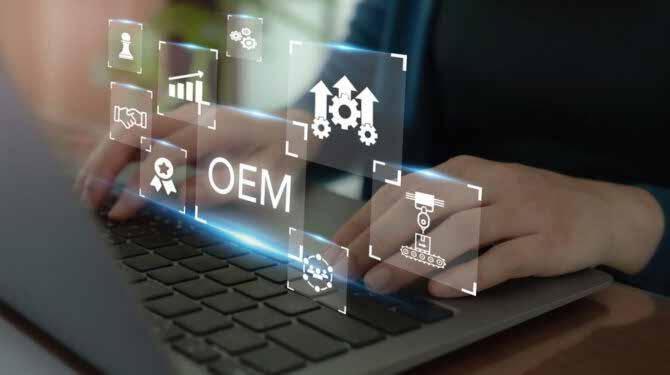
OPSWAT and SentinelOne announced their OEM partnership with the integration of SentinelOne’s AI-powered detection capabilities into OPSWAT’s Metascan Multiscanning technology. This collaboration elevates malware detection across platforms, empowering enterprises to combat modern cyber threats with even greater precision and speed.
With SentinelOne’s AI/ML detection capabilities now part of OPSWAT’s Metascan Multiscanning, joint customers benefit from:
• Enhanced detection accuracy through industry-leading AI capabilities
• Cross-platform functionality, supporting both Windows and Linux deployments
• Stronger ransomware and zero-day threat defence with autonomous, cloud-independent operation
“OPSWAT’s mission is to ensure the secure and compliant flow of data across the world’s critical infrastructure,” said Tom Mullen, Senior Vice President, Business Development, OPSWAT. “Integrating SentinelOne’s AI detections strengthens Metascan’s multilayered defence, giving our customers faster, smarter protection against today’s most sophisticated threats.”
The inclusion of SentinelOne’s AI/ML detections in Metascan Multiscanning provides unmatched malware detection through simultaneous scanning with over 30 leading anti-malware engines, utilising signature, heuristic, and machine learning techniques to achieve over 99 percent detection accuracy. The integration of SentinelOne’s AI/ ML detections further amplifies this capability by identifying
threats that bypass traditional defences, such as polymorphic malware.
“Our collaboration with OPSWAT reflects a shared commitment to strengthening cybersecurity through innovation,” said Melissa K. Smith, Vice President, Strategic Technology Partnerships and Initiatives, SentinelOne. “By integrating our AI/ML detections with Metascan Multiscanning, we’re delivering joint value that helps organisations elevate their threat detection strategies and better protect critical infrastructure across complex environments.”
This integration is available immediately as part of the latest Metascan Multiscanning release and supports key OPSWAT products both on-premises and cloud, including MetaDefender Core, MetaDefender ICAP Server, and MetaDefender Kiosk.



As digital transformation sweeps across industries, the shift to Everything-as-a-Service (XaaS) is reshaping the technology landscape and redefining the role of channel partners. From reselling hardware to delivering continuous value, partners are navigating a new era marked by recurring revenue, cloud-first strategies, and customer-centric engagement. We spoke to thought leaders from the industry to explore how XaaS is transforming the traditional channel model and what it takes to succeed in this services-led future
For NETSCOUT, XaaS marks a strategic departure from transactional sales to long-term, value-driven partnerships. Emad Fahmy outlines how the channel must now support hybrid infrastructures and deliver continuous performance optimisation. Through

offerings like Visibility-as-a-Service (VaaS), NETSCOUT empowers partners to act as proactive, embedded extensions of their customers’ IT teams—delivering insights, identifying root causes, and ensuring consistent service quality.
However, the shift isn’t without its hurdles. Interoperability in multi-vendor environments, the challenge of visibility in distributed networks, and the need to adapt to recurring revenue models all require new capabilities. NETSCOUT addresses these gaps with Smart Data technologies and robust partner enablement. In the XaaS era, customer expectations have risen sharply. It’s no longer enough to react; partners must anticipate. Fahmy stresses that delivering proactive support, real-time visibility, and business-aligned outcomes is the new baseline for building trust.
Paul Flannery sees XaaS as a transformative opportunity—unlocking recurring revenue, high-margin services, and stronger valuations for partners. But the transition can be financially challenging in the short term. Epicor addresses this through a “partner-first” SaaS margin model that has already driven strong adoption across the Middle East and other regions. Beyond revenue, Flannery emphasises the value of deeper, more personalised customer engagement. He highlights how partners like Index Infotech are succeeding by building sector-specific cloud configurations, particularly in manufacturing. With the
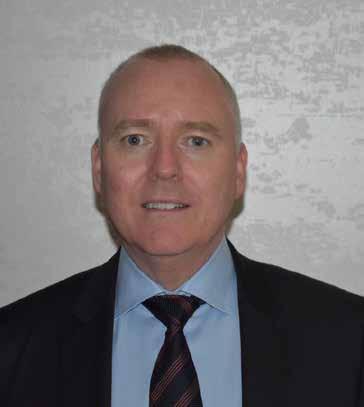
rise of AI, the potential for delivering highly targeted, high-ROI use cases is exploding.
The skills gap, however, looms large. Flannery believes partners must move from just knowing applications to mastering the full cloud stack—especially security. They must also adapt their delivery model from customisation to configuration to ensure long-term scalability and upgradability.
Today’s customers are fully invested in cloud. They expect measurable ROI, seamless integrations, and innovation that ties directly to their business. Flannery’s message to partners: speak your customer’s language, prove business value, and be a true enabler of transformation.
Geoff Greenlaw, Vice President, EMEA & LATAM Channel Sales, Pure Storage
According to Geoff Greenlaw, the shift to XaaS is pushing traditional resellers toward hybrid models that include managed services. With organisations facing tighter budgets and a talent crunch, many are outsourcing infrastructure needs to MSPs. In this context, XaaS— with built-in SLAs and flexible consumption models—is quickly becoming the standard.
Greenlaw singles out Storage-as-a-Service (STaaS) as a key growth area. By enabling customers to pay only for the storage they need—on-prem or in the cloud—STaaS meets both cost-efficiency and sustainability goals. For partners, it opens the door to new, scalable revenue streams in a growing market expected to reach nearly $50 billion by 2027.

However, Greenlaw warns that customers are looking beyond simple OpEx models. They want real services— flexible, guaranteed, and outcome-oriented. If partners don’t align with this, they risk being left behind. The path forward lies in delivering services that go beyond billing models to offer true business impact.
Reinventing the channel with customer-centric services
Moses Mathuram, Vice President Strategic Alliances and Channels, WSO2
Moses Mathuram offers a candid assessment: the traditional license-reselling model is in decline. In its place, XaaS is demanding a radical reinvention of the channel partner’s role—from vendor middleman to strategic advisor. To thrive, partners must shift to subscription-driven engagement and take ownership of

the full-service lifecycle—from onboarding to outcome realisation.
WSO2 sees high-value opportunities in cloud-based integration, managed services, and industry-specific accelerators. With XaaS, customer engagement becomes long-term and strategic, enabling partners to participate in continuous innovation cycles.
Yet, this shift can stretch traditional business models. Many partners need to overhaul their technical capabilities, cash flow structures, and incentive systems. Investing in skills like DevOps, cloud architecture, AI, and customer success is no longer optional.
Customers, Mathuram stresses, now expect continuous value and rapid time-to-impact. The channel must proactively drive adoption, demonstrate measurable outcomes, and abandon the passive fulfillment mindset. It’s about becoming intimately involved in the customer’s innovation journey.
Mohammed Al-Moneer, Sr. Regional Director, MEA & Turkey,
Describing the XaaS shift as a “seismic wave,” Mohammed Al-Moneer highlights how the traditional reseller model is rapidly becoming obsolete—especially in this region, where digital transformation is both a
policy and a business priority. Here, XaaS is not just a trend—it’s a necessity.
Moneer sees traditional resellers evolving into managed service providers, with recurring revenue replacing one-off product sales. The upside? Deeper engagement and new monetisation avenues—from subscription management to data-driven upselling. As cloud adoption rises, partners who can bridge hybrid deployment needs with compliance and scalability will be in high demand.

Still, the transition isn’t easy. Operational retooling, sales retraining, and a mindset shift are all required. Many partners struggle with upfront investments and cultural change.
Customer expectations in the XaaS world are steep. They want immediate value, seamless integration, and proactive support. In this landscape, the most successful partners will be those who simplify complexity, communicate ROI, and place the customer at the centre of every service.

Jai Bhatia, Vice President,Newcom, reflects on the company’s journey of strategic growth, agile transformation, and partner-first innovation


Can you reflect on Newcom’s origins and elaborate on how the company has grown and transformed over the years?
Newcom’s journey over the past decade has been one of purposeful growth, strategic evolution, and an unwavering commitment to excellence. I’ve been part of this remarkable story since 2014, when we were just beginning to shape the foundation of what Newcom would become. At that time, our focus was on assembling a strong, forward-thinking team — a group of respected professionals who shared a common vision for innovation, integrity, and market leadership.
Over the years, we’ve expanded far beyond our initial footprint. We’ve actively pursued opportunities across diverse market segments and transformed our distribution landscape to meet the evolving needs of our partners and customers. We have grown from a focused startup into a dynamic, multi-channel organisation with a strong presence across industries.
One of the most rewarding parts of this journey has been seeing how our culture of collaboration and adaptability has enabled us to stay ahead of market trends. Whether it’s embracing new technologies, entering emerging verticals, or building long-term partnerships with our vendors – Samsung, Logitech, TP-Link, Targus, Arozzi, and Lindy, Newcom has continually evolved while staying true to its core values.
Looking ahead, with a solid foundation and a talented, dedicated team, I believe Newcom is well-positioned to continue driving growth and creating value for all stakeholders.
What is the company’s core mission today, and how has that evolved over the years?
At Newcom, our core mission is to bridge the gap between transformative technologies and

team members
the communities we serve across the Middle East. We believe in the power of digital transformation— not just as a business driver, but as a force that can truly elevate the quality of life.
When we started, our focus was on enabling access, ensuring that even the most underserved segments of the market had the tools and technologies they needed to grow. Over the years, this has provided cutting-edge solutions, backed by responsive service, strategic marketing support, and reliable financial and logistical frameworks.
Today, we see ourselves not just as a distributor, but as an
enabler of meaningful progress. Our mission continues to be shaped by a partner-first mindset, operational excellence, and a deep understanding of local market dynamics. As technology advances, so does our role, always with a clear goal in mind: to make innovation more inclusive, accessible, and impactful for all.
How does Newcom continue to differentiate itself in the everevolving IT channel landscape of the Middle East?
At Newcom, differentiation has never been about doing more; it’s about doing what matters, better. In a fast-changing IT channel

landscape, our strength lies in staying agile, responsive, and deeply connected to our partners. While many players in the region focus on scale, we focus on relevance—offering tailored support, faster decision-making, and a partner-first approach that larger distributors often struggle to deliver.
We’ve built our model around trust and accessibility, especially for the mid-market and emerging channel players who are often underserved. By combining that with a carefully curated vendor portfolio, strong logistics, and ongoing enablement programmes, we ensure our partners are
not just supported—they’re empowered to grow.
Above all, we differentiate through our ability to adapt quickly, build long-term relationships, and stay ahead by listening closely to what the market needs.
What roles do channel partnerships and vendor relationships play in Newcom’s growth strategy?
Channel partnerships and vendor relationships have always been at the core of Newcom’s growth strategy. We firmly believe that sustainable growth comes from building trust-based, long-
Our mission continues to be shaped by a partnerfirst mindset, operational excellence, and a deep understanding of local market dynamics”
term relationships, not just transactions. On the channel side, we take a partner-first approach, working closely with resellers, retailers, and system integrators to understand their challenges, support their growth, and empower them with the tools and solutions they need to succeed. This includes everything from tailored marketing and sales support to flexible logistics and financing models that help them stay agile in a competitive market.
Equally, our vendor relationships are built on alignment and shared vision. We work with brands that complement our value innovation, reliability, and customer focus, and we invest in growing those relationships through joint planning, consistent communication, and a strong execution framework.
Ultimately, both our partners and vendors are integral to our ecosystem. They are not just part of our strategy—they are our strategy. Their success is our success, and that mindset drives us to operate every day.
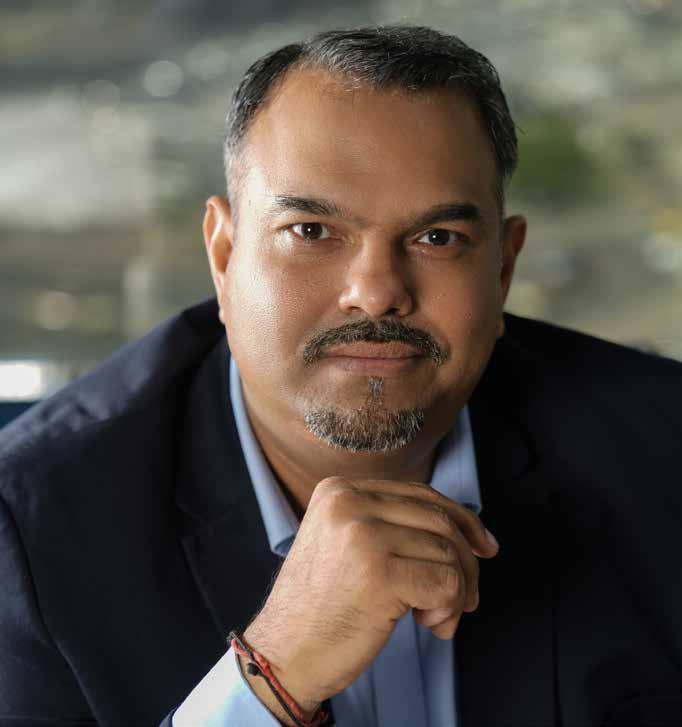
What key initiatives are you currently driving to upskill your channel teams or partners?
At Newcom, upskilling is a strategic priority embedded in how we engage with both our partners and internal channel teams. We are actively addressing key challenges through focused initiatives designed to drive real value.
For our partners, we continuously run targeted enablement programmes— including curated training
sessions, focused webinars, and industry-recognised certification tracks. Recognising the constraints partners face, we design these engagements to be highly relevant, time-efficient, and aligned with their business objectives. Our goal is to ensure every learning touchpoint delivers practical, applicable insights that help partners achieve measurable outcomes.
We also invest significantly in partner upscaling and incentive
programmes. Through a datadriven approach, we identify growth-ready partners and provide them with tailored development paths and reward structures. These go beyond product sales, focusing instead on building competencies, encouraging learning, and reinforcing long-term success. Our incentive models reward not just results, but also continuous learning and commitment to development.
For our internal channel teams, we prioritise agility and customisation in partner support. We regularly equip our teams with tools and insights to deeply understand diverse partner needs across different markets. Instead of static strategies, our teams are trained to listen actively, personalise solutions, and adapt engagement based on geography, partner maturity, and market trends.
This is supported by ongoing initiatives in market research, partner feedback systems, and internal collaboration across departments. These efforts enable us to stay proactive and fine-tune our support strategies to meet evolving demands.
At Newcom, upskilling is not a standalone activity; it’s an integrated effort. By staying partner-centric and futurefocused, we ensure both our ecosystem and our internal teams are equipped to lead in a fastmoving technology landscape.
Both our partners and vendors are integral to our ecosystem. They are not just part of our strategy—they are our strategy”
Looking ahead, what are your key priorities and vision for Newcom over the next decade?
As we look toward the next decade, our vision for Newcom is centred around growth with purpose, not just in size, but in relevance, capability, and longterm impact across the region.
Our top priority is to deepen our role as a true value-added
distributor. That means going beyond product delivery to become a strategic partner, offering datadriven insights, tailored solutions, and ongoing enablement that helps our ecosystem thrive in an increasingly complex technology landscape.
We also see a clear need to expand regionally, strengthening our presence across key markets in the Middle East, while continuing to invest in emerging technologies that matter most.
Another key focus is digital transformation within our operations. We’re committed to building smarter, more connected systems that make it easier for our partners to work with us, from seamless ordering to faster, more transparent service delivery.
We’re excited for what lies ahead, and we remain committed to evolving with the market, empowering our partners, and shaping a future where technology is accessible, impactful, and inclusive.


As AI, cybersecurity, and cloud technologies rapidly evolve, the channel ecosystem faces a critical need to upskill its workforce. Leading industry voices share insights on how emerging tech is reshaping skill requirements, the challenges of partner training, and the vital roles of certifications, hands-on experience, mentorship, and continuous learning in building a futureready channel workforce


Emerging technologies like AI and cybersecurity are reshaping the channel landscape and redefining the skills needed to succeed. It’s no longer enough to simply understand the tools—channel professionals must now apply them to real business problems. The focus has shifted to automation, data analysis, and ethical AI deployment. At the same time, cybersecurity has evolved, demanding deep knowledge of risk assessment, zero-trust frameworks, and compliance, along with the ability to act as trusted advisors in digital transformation journeys. In this fast-changing environment, continuous learning and hands-on experience have become essential. However, upskilling is not straightforward. With technologies like AI, cybersecurity, and cloud evolving rapidly, keeping training relevant is a major challenge, especially when time and budgets are tight. There’s also a wide gap in partner skill levels, making uniform training ineffective. Certifications don’t always match real-world capabilities, and motivation to learn can dip without clear incentives or business impact. What’s needed is a smarter, more flexible and ROI-driven training approach.
Certifications still hold value, providing proof of knowledge and meeting vendor requirements. But hands-on experience is becoming even more critical. Clients and vendors now expect professionals who can deliver results in dynamic, real-world settings.
Mentorship and continuous learning play a crucial role in building a future-ready channel workforce. Mentors help bridge the gap between theory and practice, while continuous learning through labs, workshops, and peer collaboration ensures teams stay agile and innovative. Together, they foster a growth-driven culture that’s prepared to lead through constant change.
Emerging technologies like AI are transforming the channel by reshaping the skills required for both existing and new roles. This shift presents both challenges and opportunities for service providers, who are often the first point of contact for organisations looking to bridge
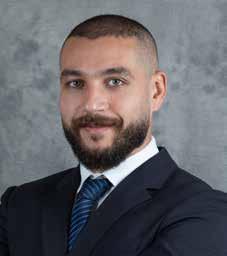
skill gaps. To stay competitive, these providers must lead the way in developing and nurturing skills aligned with new technologies. At the same time, this evolution allows them to introduce new value-added services, helping them stand out in the market and build deeper, more trusted customer relationships by proving their longterm value and technical expertise.
Certifications remain crucial as they provide a strong theoretical foundation and are widely recognised across the industry. Programmes like HPE’s Tech Pro, for example, offer insights into solutions and connect partner architects to a community of professionals through platforms like the Airheads Community. This fosters learning and collaboration. However, certifications alone aren’t enough. Handson experience is essential, especially in real-world customer scenarios.
Mentorship and continuous learning are equally important in building a future-ready channel workforce. Mentorship provides invaluable guidance and helps individuals advance their careers through shared knowledge and best practices. Mentors also benefit by refining their leadership skills, reinforcing their expertise, and gaining fresh perspectives that enhance their understanding of teams and business partners.

environments. In fast-evolving Middle Eastern markets like Saudi Arabia and the UAE, the shift towards smart cities and cloud-first strategies has made knowledge of identity management, Zero Trust, and multi-cloud security essential. Familiarity with tools like RMM and PSA, along with compliance frameworks, is increasingly in demand.
Upskilling channel teams presents several challenges, the biggest being the sheer pace of change. Many partners are still building foundational knowledge while trying to adopt new areas like cloud security and threat detection. Time constraints and a stretched workforce make it difficult to maintain service quality. Structured initiatives like the MSP Academy are helpful, but delivering consistent, high-quality training at scale across the region demands focused effort.
Certifications remain important as they validate formal training and demonstrate tool proficiency. However, true readiness also requires hands-on experience. The best-performing teams combine solid theoretical knowledge with practical application.
Continuous learning plays a vital role in building a future-ready channel. Access to ongoing training, live simulations, and labs is crucial. Programmes like Acronis Academy and the MSP Academy support partners by offering localised, role-specific training paths.
Emerging technologies like AI, cloud, and security automation are redefining the skill requirements in the channel. Teams are now expected to work with tools that not only detect threats but also respond automatically and integrate seamlessly across cloud and endpoint

Emerging technologies like AI and advancements in cybersecurity are driving major changes in the skills required within the channel. AI and machine learning are revolutionising threat detection and response, placing greater
emphasis on automation, data analysis, and intelligent systems. Expertise in identity management and secure access controls is increasingly vital. Skills in cloud security and IT/OT integration are becoming essential. Channel professionals must now be capable of deploying AI-driven tools, advising on zero-trust architectures, and working with advanced measures like quantum-resistant encryption.
Upskilling channel teams presents challenges, particularly as the threat landscape evolves rapidly. Traditional training often struggles to deliver fast enough. The continuous advancement of technologies
makes it harder to maintain consistent, up-to-date knowledge. Another key challenge is ensuring training is practical and applicable.
While certifications still serve as an important benchmark for cybersecurity knowledge, hands-on experience is becoming increasingly valued. The ability to apply skills in real scenarios often matters more than credentials alone.
Mentorship and continuous learning are critical to building a future-ready channel workforce. Mentorship helps share strategic insights and real-world experience. Continuous learning through vendor programmes, training labs, and hands-on education ensures that teams stay sharp and up to date.

Emerging technologies like AI and cybersecurity are transforming the expectations around skillsets in the channel. Channel partners are increasingly expected to deliver business-driven solutions. Skills like anomaly detection, pattern interpretation, and predictive maintenance are becoming just as critical. Expertise in data protection, audit trails, incident response, cloud security, and secure integration across environments is becoming essential.
A major challenge in upskilling channel teams is time. Even when training is accessible, it’s frequently not aligned with the unique needs of the UAE. Another issue is the knowledge gap; many partner engineers lack foundational skills. Additionally, training often feels too vendor-centric.
Certifications continue to hold value, especially in the UAE. However, enterprise clients increasingly value real-world deployment experience. Certifications may open doors, but trust and long-term success are built through proven hands-on results.
Mentorship and continuous learning are key. Joint workshops and shadow deployments not only boost technical capability but also encourage teamwork and practical problem-solving.
Emerging technologies like AI and cybersecurity

are rapidly transforming the skill requirements in the industrial channel. AVEVA is responding by embedding AI into its offerings and partnering with key technology leaders. For channel partners, AI and cybersecurity are no longer optional—they are priority areas. As the pace of technological change accelerates, partners must continuously update their knowledge.
Upskilling channel teams remains a key focus at AVEVA. To meet evolving learning needs, AVEVA is developing a multi-modal training approach. Microtraining modules are being introduced to suit how newer generations consume information. Each training session is designed around real use cases and success stories.
Certifications continue to matter, but only when paired with hands-on experience. AVEVA defines a truly committed partner as one who not only completes the certification programme but also uses that expertise proactively.
Continuous learning is essential. Mentorship and real-world experience are key to preparing the next generation of channel professionals.
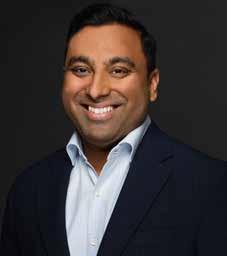
Emerging technologies like AI and cybersecurity are reshaping the skill requirements in profound ways. Although adoption of cybersecurity tools is rising, the ability to effectively operationalise them is lagging. Channel organisations that can bridge these gaps will be at the forefront.
A key challenge is the fragmented nature of the cybersecurity landscape. With the rapid pace of innovation, tools change quickly. Diverse product
portfolios require equally diverse expertise. Addressing these needs demands substantial commitment from both vendors and partners.
While certifications provide a formal credential, hands-on experience truly sets professionals apart. A blend of both is ideal. Certifications like OSCP or GIAC are especially valued.
Mentorship and continuous learning are vital. Structured mentorship programmes embedded within broader learning initiatives can create a lasting impact.
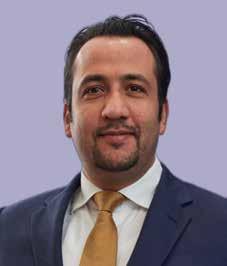
Emerging technologies like AI and cybersecurity are fundamentally transforming the channel landscape. It’s no longer sufficient to simply install a firewall. Today’s roles demand a deep understanding of AI-driven threat detection, zerotrust security models, and cloud-native infrastructure.
Upskilling these teams presents ongoing challenges. Time remains one of the biggest constraints. At Infoblox, modular, bite-sized learning paths have proven successful.
Certifications still play an important role. Yet, they are no longer the sole measure of capability. Hands-on experience is gaining prominence.
Mentorship and continuous learning are critical. Mentoring junior staff not only accelerates their development but also instils confidence. Continuous learning should be ingrained in a partner’s culture.
Emerging technologies like AI and cybersecurity are changing not just what the channel sells, but how it sells—and who does the selling. For channel partners, it’s no longer enough to have product knowledge; they must now develop strategic, consultative skills.
Upskilling, while essential, is challenging. One major issue is the speed of innovation. Vertiv addresses this through always-on, modular learning via its Partner Portal. Another challenge is the diversity across the channel.

That’s why Vertiv offers customisable enablement programmes. Cultural resistance also plays a role. Certifications continue to hold value. However, handson experience is becoming increasingly important. Programmes like the Vertiv Partner Certification
combine structured learning with practical labs.
Mentorship and continuous learning form the backbone of a future-ready channel. Vertiv fosters a culture where partners don’t just adapt—they lead.

Emerging technologies like AI and cybersecurity are significantly reshaping the skill requirements for channel partners. At Seagate, AI is becoming a core part of data management workflows. Partners need to understand how to apply these AI-driven capabilities. At the same time, cybersecurity expertise has become essential.
One of the main challenges in upskilling channel teams is the complexity and breadth of Seagate’s technology portfolio. Partners also have varying levels of expertise. Time constraints further complicate the process. Seagate addresses these challenges by offering flexible learning paths.
Certifications and learning path completions remain important benchmarks. While hands-on experience is valuable, Seagate places strong emphasis on structured learning.
Continuous learning plays a crucial role. The programme emphasises regularly updated training content, renewed competencies, and real-world use cases. By offering selfpaced and flexible learning, Seagate empowers its partners to remain competitive in an evolving market.





In an exclusive interview, Tanuja Randery, Managing Director and Vice President, Amazon Web Services, Europe, Middle East, and Africa (EMEA), shares how the company is scaling in the region, supporting national visions, and empowering partners and enterprises to lead the AI revolution

What’s driving AWS’s growing commitment to the Middle East market?
The Middle East is a region with an incredible vision. Governments here are highly supportive of innovation, the population is young and digitally fluent, and there’s a real sense of momentum across sectors.
We’ve been investing in the region since 2017, beginning with the Bahrain cloud region, expanding to the UAE, and now announcing our upcoming region in Saudi Arabia, scheduled to go live in 2026. But it’s not just about infrastructure. We’re building GenAI innovation centres, expanding our
professional services capabilities, and forging deep partnerships with players like e&, stc, and HUMAIN to co-create meaningful impact.
What makes this market stand out is that organisations aren’t looking to replicate what’s been done elsewhere— they’re aiming to leapfrog. At AWS, we believe that bold visions require bold partners. That’s what we aim to be: a long-term, strategic partner capable of executing at scale.
With growing data localisation and sovereignty requirements, how does AWS maintain compliance without compromising on global scalability?
Security is at the heart of everything we do at AWS—we call it “Job Zero.” Our infrastructure is sovereign by design, meaning we embed compliance and data protection capabilities into every layer. This architecture enables us to meet stringent compliance, and data sovereignty requirements without compromising performance or scalability.
That said, we also recognise that certain countries—and even specific workloads—require an extra layer of sovereignty, whether due to regulatory mandates or sectorspecific sensitivities. Therefor we work hand-in-hand with regulators and governments to build trust and alignment. A strong example is our recently announced UAE Sovereign Cloud Launchpad, developed in collaboration with e& Enterprise and endorsed by Dr. Mohammed Al Kuwaiti, Head of Cybersecurity for the UAE Government. This partnership combines e&’s deep domain expertise and security credentials with AWS’s sovereign-by-design infrastructure. Endorsement from the UAE Cybersecurity Council ensures that this setup can support highly regulated workloads with the confidence of full compliance and sovereignty.
There’s a remarkable hunger for learning and collaboration in this region. Whether it’s a startup founder or an established enterprise executive, everyone is eager to innovate and co-create. This spirit aligns perfectly with our partner strategy, which we call the “Power of three.” AWS brings core infrastructure and advanced
solutions—whether it’s cloud, AI, machine learning, or new innovations like Amazon Bedrock and Amazon Q. But deploying these capabilities successfully requires ecosystem integration.
This is where implementation partners, system integrators and managed services providers play a crucial role. They help customers modernise. Alongside that, business consulting partners help align these technology shifts with strategic business outcomes—because ultimately, technology only matters when it solves real business problems. Add to that the role of ISVs which enhance and extend the value of cloud platforms through deep application capabilities.

discovery, predictive diagnostics, and personalised treatment is immense. We’re actively collaborating with healthcare providers and pharmaceutical companies to help them unlock these possibilities. At Amazon, we’re deeply invested in this space through our own ventures like Amazon One Medical and Amazon Pharmacy, and we’re bringing those learnings to the region.
Our focus is on orchestrating this entire collaborative ecosystem. It’s a strategy you can see in action through our partnerships in the region, and our close work with global and regional consultancies. The partner role today isn’t just about delivery—it’s about co-innovation, co-strategy, and helping customers realise outcomes faster. That’s the real shift, and it’s incredibly exciting to be part of it.
You’ve previously highlighted a “two-tier AI economy” where startups are outpacing large enterprises in AI adoption. What structural or cultural factors contribute to this divide, and how is AWS assisting larger organisations in closing this gap?
Our recent “Unlocking Ambitions” AI report shows that startups, being digitally native, tend to embed AI across their operations from day one—whether that’s in software development, product design, or customer experience. They’re agile, they iterate fast, and they aren’t held back by legacy infrastructure. Enterprises, on the other hand, are typically starting with productivity-focused use cases— automation, operational efficiency, and reducing costs. That’s not a bad thing at all. In fact, it often unlocks budget and resources that can then be reinvested into innovation. The good news is that AI momentum
is growing. In the Middle East, 28 percent of businesses have already adopted AI, and 50 percent are planning to.
At AWS, we’re accelerating that journey by providing the right tools, such as Amazon Q Developer, our GenAI Innovation Centres, and access to models via Amazon Bedrock. We also offer extensive training, professional services, and partner solutions to guide enterprises from exploration to scale. Organisations like First Abu Dhabi Bank and CAFU are already leading the way—using AWS to fast-track their AI ambitions and product roadmaps.
Whether it’s a startup, SME, large enterprise, or government institution, everyone is facing the urgent need to build AI and cloud fluency. That’s why AWS is strongly committed to upskilling— through inclusive programmes that empower girls, boys, and underrepresented groups to participate in the digital economy. The jobs of the future are digital, and it’s essential that no one is left behind.
Are there specific industries in the Middle East where the AI adoption gap is more noticeable? How is AWS tailoring its support accordingly?
Healthcare is one of the most exciting areas, and also one where AI adoption is just beginning to take off. The potential to use AI for drug
Energy is another sector where AI has delivered tremendous advantages from optimising exploration and drilling operations to improving safety and enhancing customer interactions. We’re also seeing accelerated adoption in banking, government, and media. In fact, Middle Eastern airports and e-government services are among the most digitally advanced globally. To support this industry-specific momentum, we’re aligning with sector priorities and building tailored solutions and programmes that reflect the unique needs of each vertical. Whether it’s regulatory compliance in healthcare or realtime analytics in media, we’re enabling customers to lead in their space.
Which AWS-powered project in the Middle East stands out to you?
One standout is our $5 billion partnership with HUMAIN in Saudi Arabia, aimed at accelerating AI adoption across government and commercial sectors. We’re bringing Amazon Bedrock, our AI chips, and tools like Q Business to help drive innovation and performance.
I’m also proud of our work with AI71 and the Technology Innovation Institute(TII) in the UAE. Their Falcon model, trained on Amazon SageMaker, is now globally available via the Bedrock marketplace—a true “Made in the UAE” success story.
Beyond tech, we’re committed to skills development. From training 150,000+ individuals to launching programmes for Emirati and Saudi women, we’re helping shape a more inclusive, AI-powered future.

At the Huawei ME&CA Partner Summit 2025, Derek Hao, President, Huawei Enterprise Business ME&CA, highlighted new innovations and programmes designed to strengthen collaboration and accelerate digital transformation across the region
What is the primary objective of hosting this Partner Summit?
The Huawei Partner Summit reflects our deep commitment to our partners. More than an annual event, the Summit is a strategic platform for strengthening collaboration in today’s rapidly evolving digital landscape.
With our theme, “Accelerating the Intelligent World,” we highlighted the power of collaboration to drive meaningful innovation and transformation. We unveiled new tools, programmes, and solutions designed to help our partners expand their capabilities, enhance customer value, and capture emerging business opportunities.
At its heart, this Summit prepared our ecosystem for the future by empowering each partner to deliver a greater impact. We recognise that our success is fundamentally built on theirs.
What are the main focus areas for Huawei’s partner ecosystem this year?
This year, we focused on three key priorities: deepening partner enablement, boosting partner profitability, and accelerating industryspecific solutions. We’re investing significantly in co-marketing initiatives, advanced technical training, and specialised certifications to ensure our partners remain competitive and future-ready. We’re also enhancing
our digital collaboration platforms to make engagement more seamless and productive.
Our approach addresses three strategic market segments: national accounts, commercial markets, and distribution channels. For our business partners, we’re facilitating executive-level roundtable discussions and creating collaborative business spaces. With our distribution partners, we’re focusing on our gold-tier members and core elites to expand market reach. Across all segments, we’re methodically building Huawei’s influence in targeted industries through specialised activities, creating momentum through these established networks.
How is Huawei supporting partners with digital transformation and innovation? Innovation is in Huawei’s DNA. We consistently invest over 25 percent of our annual revenue in R&D to develop cutting-edge technologies in cloud computing, artificial intelligence, green energy, and connectivity. For our partners, we provide privileged access to these innovations alongside comprehensive solution blueprints, real-world industry cases, and collaborative innovation centres— all designed to help them deliver customised solutions that address their customers’ unique challenges.
At this year’s Tech Carnival, held alongside the Partner Summit, visitors experienced our groundbreaking AIpowered technologies transforming industries. From our intelligent campus networks and the latest Wi-Fi 7 solutions to our advanced CloudMatrix architecture and sophisticated Pangu AI models, we’re showcasing innovations that create tremendous opportunities. Partners also discovered our innovative optical technology approach and saw firsthand how we’re redefining data storage with ultra-high-performance solutions delivering petabyte-persecond bandwidth. These advancements represent significant opportunities for our partners to deliver transformative value to their customers.
2024 was a significant year for Huawei. Can you share some of the key achievements Huawei has made globally and in the Middle East and Central Asia, particularly in the enterprise and commercial markets?
2024 was indeed remarkable for Huawei. We achieved global revenue of CNY 860 billion—approximately $110 billion. Our enterprise business performed exceptionally well, with particularly strong momentum here in the Middle East and Central Asia, where our commercial market grew by 34 percent year-over-year, powered by the outstanding efforts of over 500 highly engaged partners.
The Middle East and Central Asia region is strategically vital for Huawei. Spanning 21 diverse countries with a combined GDP exceeding $6 trillion and a population of more than 500
million, this region offers tremendous growth potential. Today, we collaborate with over 3,000 partners and serve tens of thousands of SMEs throughout this dynamic region, building technological foundations for future prosperity.
What role do local distributors and service partners play in Huawei’s growth?
Our distributors and service partners are critical to our success. They serve as a vital bridge connecting Huawei with thousands of resellers, systems integrators, and end customers. We rely on them for market development, solution delivery, and comprehensive post-sales support. That’s precisely why we continuously strengthen their capabilities through tailored partner programmes, performance-based incentives, and collaborative marketing initiatives.
During our Partner Conference, we unveiled enhanced partner policies and celebrated outstanding achievements through our recognition programme. Our distribution partners, particularly our gold-tier members and elite performers, are crucial in expanding our market presence. The Tech Carnival was the ideal environment where partners could fully engage through hands-on activities, product demonstrations, formal agreements, and technical workshops—all carefully designed to build capabilities and deepen our collaborative relationships.
What is the significance of bringing this event to Uzbekistan for the first time?
Bringing the Huawei Tech Carnival & Partner Summit to Uzbekistan represents our firm commitment to this vibrant market and the broader Central Asian region. This marks the first time this flagship event has come to Uzbekistan, and we’re thrilled to feature over 30 interactive exhibition areas and welcome more than 1,500 industry professionals.
Beyond this event, Huawei is making substantial long-term investments in Uzbekistan—upgrading critical network infrastructure, establishing ICT academies to develop local talent, and creating strategic partnerships that help bridge the digital divide. We’re dedicated to generating local

employment opportunities, supporting Uzbek businesses’ growth, and sharing valuable expertise for mutual success and development.
By gathering industry leaders, technology partners, and innovators in Tashkent, we demonstrate our enduring commitment to the region’s digital transformation journey while creating a dynamic platform for meaningful collaboration to drive sustainable economic growth.
What message do you want to send to Huawei’s partners through this Summit?
Thank you. This simple but profound message is at the heart of everything we do here. Thank you for your trust, your collaboration, and your unwavering commitment. Together, we’ve achieved remarkable milestones, and I genuinely believe the future holds even greater possibilities for us all. Let’s continue to grow, innovate, and succeed together. With the right mindset and our strong ecosystem, there are no limits to what we can accomplish.
The Partners Summit embodies our vision of “Accelerating the Intelligent World” and demonstrates how we’re positioning ourselves and our partners as pioneers in the AI-driven future. Through our diverse programme—from thoughtprovoking keynotes and interactive roundtables to specialised forums and immersive exhibition experiences— we created opportunities for our partners to engage with the technologies defining the intelligent era directly.

As critical infrastructure faces unprecedented cyber threats, Edgard Capdevielle, CEO, Nozomi Networks, explains how the company is redefining OT and IoT security

How is Nozomi Networks redefining cybersecurity for critical infrastructure in today’s threat landscape?
Critical infrastructure presents a unique challenge. Traditional IT security solutions simply don’t translate effectively to the operational technology (OT) and IoT environments. From day one, Nozomi Networks has focused on this space, pioneering innovation specifically
around the convergence of OT and IoT security. We were the first to integrate artificial intelligence into asset and threat detection nearly a decade ago, and since then, we’ve consistently led with industry-first innovations—be it launching the first unified platform for vulnerability management, threat detection, and asset inventory, or expanding our coverage from networkbased monitoring to endpoint and wireless spectrum visibility. Today, we’re empowering operators to
adopt proactive risk management frameworks tailored for critical infrastructure—something that’s never been done at this scale before.
With IT and OT rapidly converging, where do you see the biggest security blind spots?
Wireless connectivity stands out as a major blind spot. As organisations embrace digital transformation, more systems are distributed and reliant on wireless technologies, even in remote
or mobile environments. These connections, while essential, often go unmonitored, making them vulnerable. Beyond technology, the real issue is a lack of process maturity. Financial sectors have long battled cyber-attacks and, over time, developed strong defence mechanisms. In contrast, critical infrastructure has not experienced this same evolution—skills, practices, and even budgets are lagging. Ransomware has changed the game, transforming operational downtime into a monetisable event and forcing infrastructure operators to confront a threat landscape they weren’t prepared for.
Legacy systems weren’t built for today’s threats — how do you secure what you can’t modernise?
Most legacy systems were never designed with cybersecurity in mind, nor can they easily accommodate today’s security solutions. That’s why our approach is built around non-disruptive, technology-agnostic visibility. Nozomi’s platform integrates seamlessly into these environments by listening to network traffic passively—without altering it— through methods like SPAN ports or network taps. We’re able to decode and understand hundreds of outdated and proprietary protocols, even if the vendors who built them no longer support them. This ability to interpret and monitor legacy systems in a non-invasive way is now table stakes in our industry and is core to what we do.
Adversaries are using AI. Is the industry ready to fight AI with AI?
AI is significantly raising the bar for threat actors, allowing even mediocre attackers to operate with advanced capabilities. In response, defenders must also harness AI—but this battle can’t be fought alone. It requires a collaborative ecosystem that includes vendors like Nozomi, regulators, and operators. Fortunately, AI has been foundational to Nozomi’s

Edgard Capdevielle, Nozomi Networks
We’ve embedded it into all layers of our platform— from highly accurate asset detection to dynamic threat analysis and riskbased prioritisation”
technologies. Every new connection introduces a potential entry point, and many organisations aren’t monitoring these new vectors adequately. Moreover, even AI itself can become a vulnerability when bad actors manipulate models or introduce poisoned data. As these technologies integrate deeper into operational environments, security teams need to stay agile and proactive to avoid falling behind.
Can you share a use-case that highlights the real-world impact of Nozomi’s solutions?
Recent geopolitical events have underscored the growing role of cyber as a weapon. In regions experiencing conflict, we’ve seen a dramatic increase in malicious activity targeting critical infrastructure. Nozomi’s solutions are instrumental in providing visibility, detection, and resilience in such high-stakes environments. Our technology has helped operators stay ahead of sophisticated threats—often preventing service disruptions that could have major economic and societal impacts.
What’s your vision for the future of OT and IoT security, and how is Nozomi positioned to lead it?
technology since day one. We’ve embedded it into all layers of our platform—from highly accurate asset detection to dynamic threat analysis and risk-based prioritisation. This ongoing innovation ensures our customers can stay ahead in an increasingly AIdriven threat landscape.
What’s the most surprising cybersecurity trend you’re seeing in this region right now?
While AI dominates headlines, the real story is the rapid expansion of the attack surface—especially through IoT and wireless
We believe in enabling the heroes of our digital age—the cybersecurity professionals securing critical infrastructure. Many of them have inherited OT security responsibilities without the tools, budgets, or training to handle them effectively. But that’s changing. As IT, OT, and IoT continue to converge, we’re going to see a stronger integration of security practices and technologies. Nozomi is positioned to lead this shift by continuing to innovate with AI-driven solutions, nondisruptive deployment, and deep protocol understanding. We envision a future where cyber defenders are empowered to enable transformation, regulators enforce clear standards, and digital infrastructure becomes both smarter and safer for all.
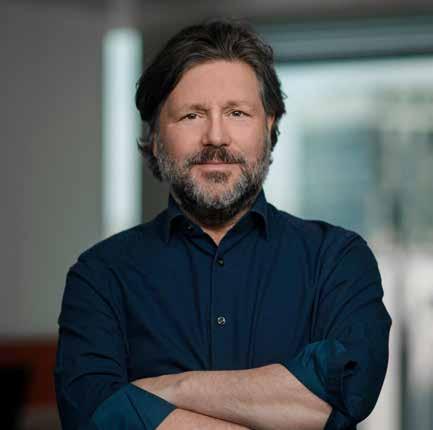
• Endava joins OpenAI’s exclusive Beta Services Partner Programme, formalising a year-long collaboration.
• Endava is the first in the programme, delivering impactful AI solutions with OpenAI.
• The partnership has resulted in industry-first products and services for joint enterprise customers.
• This formalisation strengthens Endava’s leadership in enterprise AI adoption.
• Endava will continue leveraging OpenAI technologies to drive AI-powered business transformation.
• Endava has delivered solutions using OpenAI tools, including:
• Morpheus – agentic AI accelerator.
• Compass – discovery accelerator for core modernisation.
• The partnership reflects a shared mission to help enterprises become AI-native.
This isn’t the start of a relationship – it’s a recognition of all we’ve already achieved together. Some years ago, we chose to embrace the AI revolution and prepare ourselves for the huge digital shift that we are now seeing. Our recent work with OpenAI has demonstrated our ability to deliver as a credible, reliable enterprise partner in the space. Formalising the partnership is a natural next step in our shared mission to bring the power of AI into the hands of global enterprises”
John Cotterell, CEO, Endava

• Sophos launches MSP Elevate, a new programme designed to accelerate business growth for Managed Service Providers (MSPs).
• The programme offers high-value, differentiated cybersecurity solutions and rewards growth with additional investment.
• MSP Elevate provides unique business benefits, including exclusive access to a high-value Sophos MDR service.
• The programme addresses key MSP challenges:
• Reduces time spent managing multiple platforms with unified Sophos Central.
• Network-in-a-Box bundles simplify management of the full network stack.
• Automated threat response capabilities help offset the skills shortage in cybersecurity.
• Programme benefits include:
• Exclusive Sophos MDR Bundle for MSP: Includes MDR Complete, 24/7 incident response, 1-year data retention, NDR, and integration packs.
• Simplified sales process: One SKU for all MDR services speeds deployment.
• Discounted hardware bundle: Includes Sophos Firewall, Switch, and Wireless Access Points managed via Sophos Central.
• Growth-based rebates: MSPs rewarded for increased monthly billings.
• Architect-level training: For Sophos Endpoint and Firewall.
• Invite-only access to Sophos summits: Hands-on training, roadmap influence, and executive engagement.
• Future benefits will be added to enhance profitability and service value.
• The programme is non-exclusive, requires a minimum monthly spend over 12 months, and membership in the MSP Flex programme.
• MSPs can choose Sophos-delivered MDR or use Sophos to augment internal teams, including outof-hours coverage.
• Sophos MDR currently protects over 18,000 MSP-managed environments, offering real-time threat insights to continuously optimise defences.
With mROC, CISOs have access to an ecosystem of partners who operationalise the ROC and serve as strategic risk advisors. For MSSPs, mROC unlocks a valuable revenue opportunity, empowering them to deliver comprehensive cyber risk management—including risk aggregation, quantification, monitoring, and remediation—powered by Qualys Enterprise TruRisk Management.”
Chris Bell, Senior Vice President of Global Channel, Alliances and Corporate Development, Sophos
Qualys has expanded its exclusive Managed Risk Operations Center (mROC) Partner Alliance to include seven new global partners, including Teksalah from the Middle East. Hadi Jaafarawi (HJ), Regional VP – MEA, Qualys, and Murali Konasani (MK), CEO, Teksalah discuss how the mROC initiative is reshaping enterprise cyber risk management
What is the Qualys mROC, and what motivated the launch of this offering?
HJ: The Qualys Managed Risk Operations Centre, or mROC, is a purpose-built alliance and service framework designed to help organisations tackle the growing complexity of cyber risk management. As businesses face a rapidly evolving threat landscape, they often struggle with fragmented security tools, siloed teams, and reactive postures. We launched mROC to shift this paradigm. It empowers our strategic partners to offer continuous, proactive risk reduction services powered by the Qualys Enterprise TruRisk Platform. This model addresses the industry’s critical need for unified visibility, intelligent risk prioritisation, and actionable insights—delivered through trusted managed service providers. It’s not just about detecting vulnerabilities; it’s about driving measurable risk outcomes at scale.
What unique value does the mROC bring to Managed Service Providers (MSPs)?
HJ: For MSPs, the mROC offers a transformative opportunity. It gives them access to Qualys’ deep telemetry and analytics while enabling them to deliver risk-based services that go far beyond traditional monitoring. Instead of managing a patchwork of tools and alert fatigue, partners can now deliver consolidated visibility, prioritised remediation, and real-time insights—all through a unified platform. This helps MSPs differentiate themselves in the market, increase operational efficiency, and deliver strategic outcomes to clients. More importantly, it repositions them from being reactive security vendors to proactive, outcome-driven advisors. That’s a game-changer in today’s managed security services space.
How does the mROC enhance cybersecurity outcomes for end customers?
HJ: The real benefit to customers lies in the shift from reactive defence to proactive risk management. With the mROC, organisations gain continuous, contextual visibility into their cyber risk posture. They’re no longer buried under an avalanche of alerts—they can now understand which vulnerabilities actually matter to their business, prioritise remediation efforts accordingly, and measure the impact

of their security initiatives. This alignment of security with business risk drastically improves response times, reduces noise, and ensures security resources are used where they matter most. With mROC partners like Teksalah, customers also benefit from hands-on guidance and operational expertise to integrate these practices seamlessly.
Why did Qualys select Teksalah to join the mROC Partner Alliance, and what inspired Teksalah to come on board?
HJ: Teksalah was a natural choice for us. They’ve been a committed Qualys partner for over eight years and have consistently demonstrated strong technical capabilities and a deep understanding of customer needs in the Middle East
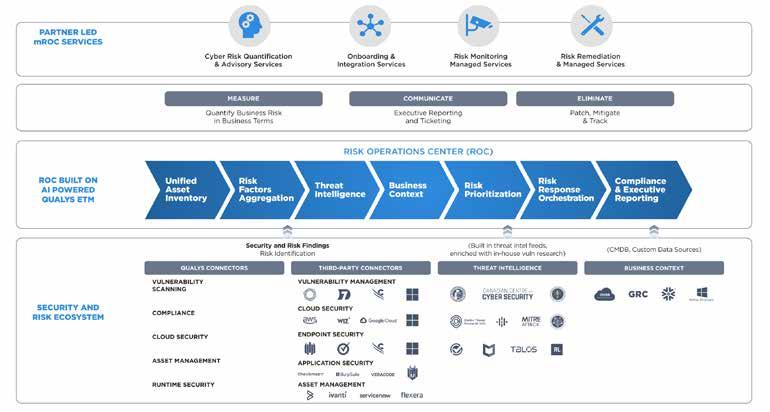
market. But what truly set them apart was their alignment with our vision for proactive, risk-centric cybersecurity. Their approach is consultative, data-driven, and focused on business outcomes—which is exactly what the mROC stands for. We knew they had the right blend of technical expertise and strategic mindset to deliver real value through this partnership.
MK: For Teksalah, joining the mROC Partner Alliance represents a significant milestone. The cybersecurity landscape is evolving, and we recognised that traditional, reactive models were no longer sufficient. What inspired us about the mROC was its emphasis on continuous risk monitoring, business impact alignment, and proactive decision-making. It allows us to offer our customers not just tools, but solutions—solutions that reduce complexity, improve visibility, and help them stay ahead of threats. Our decision was driven by both the opportunity to enhance our service portfolio and our belief in a more effective, intelligence-led approach to cybersecurity.
In what ways does Teksalah plan to deliver the value of the mROC to its customer base?
MK: We plan to deliver mROC value by tightly integrating it into our managed services and advisory offerings. The foundation of our approach will be the TruRisk Platform, which enables us to contextualise threats, prioritise vulnerabilities, and recommend risk-informed actions. Beyond technology, we will act as strategic advisors to our customers, helping them align their cybersecurity posture with their business objectives. We’ll focus on use cases that deliver the most impact—whether that’s reducing time to

remediation, improving compliance, or strengthening overall cyber resilience. Our goal is to empower our customers with visibility, agility, and confidence in managing their security risks in an ever-changing environment.
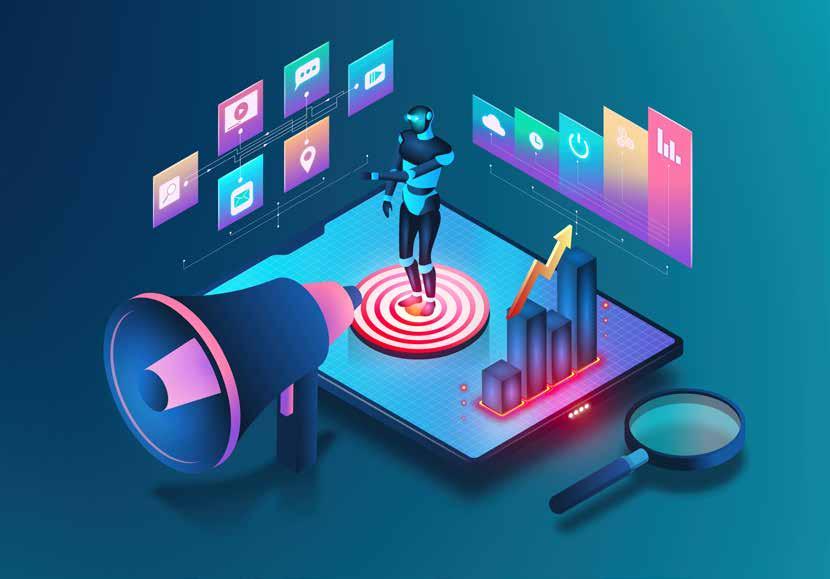
Ahmed Tayeh, Partner Manager Middle East & Turkey, Cloudera, highlights how AI is transforming channel marketing by driving efficiency, personalisation, and stronger partner collaborations for lasting success
Artificial Intelligence is changing how businesses reach scalable growth in a world where manual channel marketing and static strategies are fading, particularly in light of many different approaches and uncertain results.
Companies in the Middle East are using AI to achieve a clear competitive advantage by driving unmatched efficiency, actionable insights, and hyperpersonalisation. In fact, 98 percent
of IT leaders in the UAE believe that to remain ahead, investing in AI is fundamentally important.
In an age of rapid change, the digital revolution is altering how businesses form technology alliances and conduct channel marketing. Welcome to a world where AI is the new foundation of expansion ambitions, not just a benefit.
How AI is making the shift in channel marketing AI offers data-driven, dynamic
methods that improve overall efficiency. It is currently being used by businesses to gain predictive insights, streamline complicated processes, and customise partner engagement.
Automating routine tasks is an important field in which AI helps. AI tools can handle tasks like generating reports, scheduling email campaigns, and spotting high-potential accounts, therefore releasing time for marketers. This lets them concentrate on strategic planning, team relationship building, and general productivity improvement. Although automation can handle routine tasks and data analysis, communication and relationship-building initiatives still need the human touch.
Predictive analytics helps AI improve decision-making. Examining data trends with the help of AI reveals multiple possibilities in the sales pipeline. For instance, they can determine which partner campaigns are most likely to provide return on investment, helping companies allocate resources more efficiently and improve their co-marketing strategies.

Ahmed Tayeh, Cloudera
The implementation of best practices like the 40-20-40 rule and the optimisation of the technician-to endpoint ratio allows MSPs to build a solid foundation of efficiency that can absorb more clients without costs spiraling out of control”
A good trick would be to use AI analytics to identify the most effective tactics. While leaving strategies that don’t produce quantifiable results, concentrate on growing campaigns that are successful. By ensuring resources are allocated prudently, this datadriven strategy maximises overall effectiveness.
AI also makes it possible to scale highly customised co-marketing. Custom content, including blog posts, landing pages, and video scripts, can be tailored to appeal to particular partner audiences. AI also makes technical graphics easier to use for campaigns. Personalising messages and marketing tools depending on each partner’s particular requirements, which results in better relationships and more powerful
campaigns, therefore strengthening a constant brand presence.
A competitive edge to winning technology partners
Effective channel marketing in the technology industry necessitates both a strategic application of AI tools and a fundamental change in perspective. AI can give you a competitive edge by altering the way you approach content creation, distribution, and performance evaluation. Working with your partners to create a content flywheel is one successful tactic, while delivering valuable content is essential to maintaining engagement, and AI can help you expedite this process from conception to implementation and analysis. Taking a core piece of content, like a white paper, and turning it into many different assets to create demand is a prudent place to start. The original white paper can be expanded into a comprehensive e-book, for instance, or you can use key quotes or statistics to create bitesized social media posts for LinkedIn, or you can use the information to create brief, interesting blog posts or visually appealing infographics. This tactic maintains engagement while boosting content utility.
Data-driven decision making
AI-powered solutions have completely changed how companies discover insights in large, complicated datasets. Better team alignment, ongoing campaign optimisation, and increased return on investment are made possible by AI tools. Leveraging AI solutions gives marketers access to real-time data on partner marketing performance, allowing them to pinpoint the most effective campaigns. Teams can replicate successful tactics and get rid of inefficiencies by identifying highperforming strategies, which will produce more significant outcomes. Reviewing and improving your procedures regularly is a good way to be on top of your game. AI requires continuous evaluation to address workflow inefficiencies and improve overall results, it is not a one-and-
done solution. Using AI dashboards to share insights with the marketing and sales teams improves alignment and guarantees that strategies are data-driven and effectively implemented. Furthermore, sharing these results with partners builds trust through openness while also highlighting areas for development and progress. In the end, partnerships are strengthened and long-term success is driven by this collaborative, data-driven strategy.
AI helps companies in identifying new opportunities, predicting trends, and implementing proactive strategies that encourage cooperation and receptive development by utilising data-driven insights. By employing AI’s capacity to evaluate data, spot important opportunities, and predict partner requirements, marketers can use it to create collaborative approaches that are in line with common goals, monitor performance metrics in real time, and personalise communications. Organisations can build stronger, more enduring relationships that promote long-term success for both parties by promoting openness, trust, and operational effectiveness.
AI has the potential to significantly increase productivity and improve marketers’ work, not to replace their knowledge, but to strengthen and magnify it. AI frees up time and resources by automating repetitive tasks like data analysis, enabling marketers to concentrate on strategic projects and innovative pursuits. AI tools in content creation make it possible to quickly produce specialised, excellent content that appeals to target audiences. Above all, by enabling proactive engagement with partners and customers, realtime insights, and personalised communication, AI builds deeper, more meaningful relationships. In the end, adopting AI as an enabler makes marketing more effective, efficient, and impactful while promoting long-term success in a field that is becoming increasingly competitive.



Channel Insights Summit 2025 brought together the region’s leading voices in the IT channel to explore bold strategies, responsible innovation, and the power of AI-driven transformation, culminating in a celebration of the ecosystem

The Channel Insights Summit 2025, powered by Dubai Computer Group (DCG) and hosted by Channel Insights Middle East and Insight Media & Publishing, concluded on a high note, bringing together the region’s top channel leaders, innovators, and strategists for an evening of bold thinking, purposeful conversations, and powerful connections.
The summit served as a moment to pause, reflect, and reimagine the future of the channel.


With the theme ‘Channel 3.0: Accelerating Value in an AI-Driven World’, the event explored how the channel is evolving from product-push to insight-led growth, from fulfilment to foresight, and from traditional programmes to thriving partner ecosystems. At the heart of every conversation were three key drivers: collaboration, reinvention, and courage.
The evening started with an engaging keynote by Sayantan Dev, Global Head of Software Solutions Group at Redington


Middle East and Africa. He set the tone with a compelling vision for how the channel can lead in the age of AI, stressing innovation, readiness, and real-world impact.
“The question is not about whether the channel will transform, but how boldly we are going to shape that transformation,” said Sayantan, challenging the audience to lead with intent.
This was followed by an insightful presentation by Dharmendra Sawlani, Board Member at Dubai Computer Group (DCG), who shared a powerful call to action on Responsible AI, emphasising the importance of principled innovation as we step into the era of intelligent transformation.
“Let’s not wait for others to write the rules. Let’s help shape them. Let’s ensure that AI from our region is not only powerful but principled,” he urged.
The evening also featured two dynamic fireside sessions that sparked thoughtful dialogue and honest reflection:
• Solving the Skills Crunch in the Channel – Moderated by Adelle Geronimo, with Prasanth Prasad, CTO, Spire Solutions and Suresh Bora, CTO, iConnect IT Business Solutions
• Inside the AI-PC Revolution: What Copilot+ Means for the Channel – Moderated by Jean Magdy, Business Development Manager, Logicom Distribution, with Narayanan Venkataraman, Head of Channel – Middle East, Saudi & Africa, HP



The event concluded with the much-anticipated Channel Insights Awards, honouring excellence in channel strategy, innovation, marketing, and partner success.Congratulations to all the winners who are driving real impact and pushing boundaries across the ecosystem! Subeesh



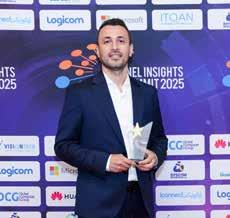


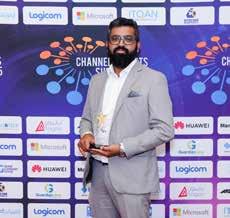

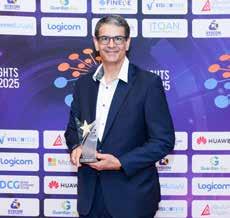

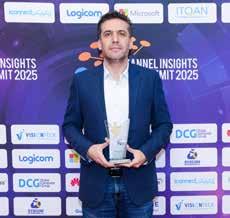
Mohammed Al Tamimi
Channel Growth Leader

Zacky Vaz
Channel Growth Leader
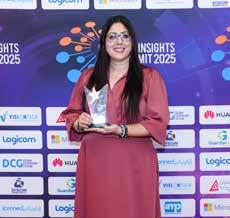
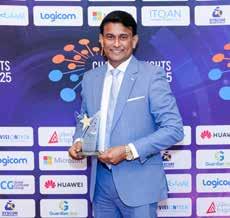
Sakkeer Hussain
Sheetal Kalra ManageEngine Dlink Fortinet Akamai Solarwinds
Channel Growth Leader

Channel Growth Leader
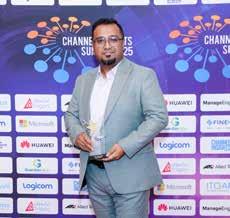
Sujoy Banerjee
Channel Growth Leader
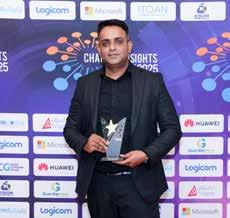
Habid Kadhalikattil ASBIS
Channel Growth Leader



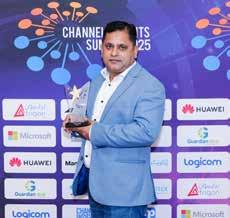



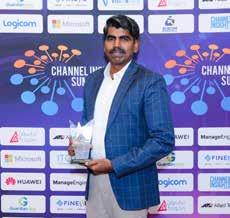
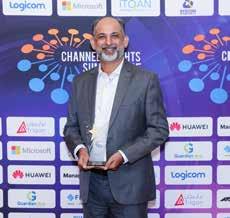

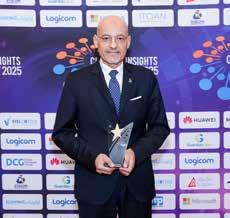


Ghassan Abou Rjeily, Sr. Manager - Channel Sales & Alliances – GCC, Riverbed, shares how AI-driven observability is transforming IT operations and unlocking high-margin opportunities for partners across the region

How is AI-powered observability unlocking new revenue opportunities for partners?
Many organisations today are under pressure to modernise their digital environments while grappling with fragmented tools, blind spots, and rising user expectations. IT teams are being asked to deliver more reliable, seamless digital experiences across hybrid cloud, remote work, and distributed edge environments— without increasing costs. That’s a tall order. And this is where AI-powered observability becomes essential.
At Riverbed, we’re seeing AIpowered observability become a real catalyst for business transformation,
and in turn, a source of opportunity for our partners. Our leadership in AIOps is rooted in our ability to collect the broadest range of high-fidelity data—ensuring every insight is grounded in precision. For partners, this unlocks new ways to deliver higher-value services, from proactive performance management and root-cause analysis to AI-driven automation.
With the latest enhancements to our Riverbed Platform, we’ve eliminated blind spots across critical domains like hybrid cloud, VDI, unified communications, and mobile endpoints. That means partners can confidently walk into customer conversations with solutions that see and solve what others can’t.
Whether you’re building end-to-end digital transformation offerings or integrating observability into a managed service portfolio, AIpowered insights give you the edge.
Put simply, AI-powered observability isn’t just about better monitoring. It’s about empowering partners to deliver measurable business value. And that unlocks entirely new conversations with CIOs and line-of-business leaders alike.
How does consolidating IT tools with Riverbed help reduce customer costs and improve partner margins?
Organisations are drowning in tools. Many are running 20, sometimes 30 different IT monitoring solutions

With Riverbed seeing 102 percent year-on-year growth in observability bookings, the opportunity for partners—particularly in the Middle East—is immense”
move from firefighting to foresight. By leveraging Smart OpenTelemetry (Smart OTel), we’re also cutting down the noise and focusing only on the most valuable telemetry data. That means better decision-making, reduced infrastructure costs, and faster outcomes.
For partners, tool consolidation with Riverbed means you’re delivering more value with less complexity. It improves your service delivery margins, accelerates deployment times, and allows you to wrap your own services around a solution that customers trust to improve both performance and costefficiency. Whether you’re a systems integrator or a managed services provider, this opens the door to greater profitability.
How can partners use Riverbed’s Generative, Predictive & Agentic AI to scale proactive IT solutions?
Our AI trio—Generative, Predictive and Agentic—gives partners an unprecedented ability to scale proactive IT across client environments, regardless of complexity.
writing a line of code. Partners can help customers automate highvalue workflows, tailored to their unique environments, with human oversight built in.
Together, these AI capabilities help partners deliver smarter, more proactive IT operations.
With 102 percent YoY growth in observability bookings, what opportunities do you see for channel partners in the region? The momentum behind observability is accelerating. With Riverbed seeing 102 percent yearon-year growth in observability bookings, the opportunity for partners—particularly in the Middle East—is immense.
Take Saudi Arabia, for example. Our most recent global AI and Digital Experience survey reveals that 59 percent of organisations there have already formed dedicated AI teams, and 57 percent have set up observability or user experience teams. This signals a clear shift towards data-driven, proactive IT—an area where partners can lead the charge.
across fragmented environments. It’s expensive, inefficient, and increasingly unsustainable. Customers are looking for a smarter way forward—and so are our partners.
At Riverbed, our approach brings everything together under one roof. The Riverbed Platform consolidates disconnected observability tools into a unified, open architecture. For partners, this translates into a more streamlined solution to offer, easier integration into broader IT ecosystems, and fewer moving parts to manage.
And now, our latest platform enhancements are designed with scale and simplicity in mind. We’ve introduced next-gen capabilities powered by Generative, Predictive and Agentic AI—enabling IT teams to
Let’s start with Riverbed IQ Assist—our Generative AI offering. It delivers instant, context-aware answers with none of the back-andforth you’d expect from typical AI chatbots. If a customer’s network is lagging or a VDI session is glitchy, IQ Assist surfaces the root cause graphically and recommends next steps—within seconds. That speed and clarity are game changers for partners offering support services or building AI into broader transformation solutions.
Then there’s Riverbed IQ AIOps, our Predictive AI engine. Think of it as an early warning system—it learns from patterns in both real-time and historical telemetry to detect signs of trouble before it escalates. For partners, this opens up the ability to deliver proactive SLAs, minimise outages, and shift from break-fix to continuous optimisation.
And finally, Agentic AI gives IT teams drag-and-drop control over intelligent automation—without
The demand is also sophisticated. A full 84 percent of Saudi leaders said using real data (not synthetic) is essential to AI efforts aimed at improving digital experience. Meanwhile, 92 percent of respondents in the kingdom agree that comprehensive observability across IT is critical to AIOps strategies.
For partners, this opens two big doors. First, the chance to help customers harness high-fidelity observability data to build resilient, AI-enabled infrastructures. Second, to offer tailored solutions—whether it’s managed observability, system integration, or strategic consulting— that help clients overcome blind spots across cloud, remote work, and increasingly complex networks.
Observability is now central to digital transformation. Partners that can deliver it intelligently, scalably, and proactively—with Riverbed at the core—will be best positioned to grow alongside this surging market.
VS Hariharan, Managing Director & Group CEO, Redington, at the company’s 25-year celebration in the region, reflected on its journey, the trust it has built in the ecosystem, and the road ahead
What key milestones have shaped Redington’s journey?
While I’ve been in my current role for just a year and a half, I’ve been associated with Redington for a decade as a director on the board. Even before that, I had the opportunity to work closely with Redington in a professional capacity. So, I’ve witnessed the company’s growth over the last 25 years. It’s been an amazing journey.
There are four key dimensions that have shaped our growth. The first one is category expansion. We started with simple printers and PCs and then moved into value categories like servers and storage. We ventured into smartphones, and now we’re playing in cloud and AI.
Each of these transitions marked important inflection points. And as we evolved, we picked up major brands in each category – these partnerships have stood the test of time and supported us throughout.
Next came geographic expansion – we expanded one step at a time, starting with the UAE, then Saudi Arabia, followed by African countries and the rest of the GCC.
The third one is our partner network. We’ve been fortunate to have long-standing relationships with channel partners and resellers, which helped us build a solid base of resellers globally and regionally.
The last is scalability. Today, we’re among the top 10 global distributors, a $12 billion company. It’s a blessing and certainly something we don’t take for granted.
How has Redington built lasting trust, and what’s next on the transformation front?
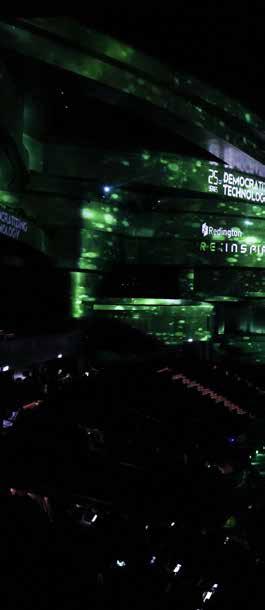
We’ve been fortunate to have long-standing relationships with channel partners and resellers, which helped us build a solid base of resellers globally and regionally”
The foundation of our trust lies in how we do business – agile, responsive, and grounded in integrity. We don’t overpromise, and when we fall short, we own it. Our relationships with our brand partners are built on constant dialogue. Sometimes we exceed expectations, sometimes we don’t – but we always go back, reflect, rebuild, and come back stronger. It’s this consistency and authenticity that truly earns trust.
Unlike many global distributors, we go beyond surface-level presence – we truly localise. We establish entities, build on-ground teams, and
operate as if we’re part of the local fabric. At the same time, we hold ourselves to the highest standards of compliance. We don’t cut corners, and we don’t compromise on integrity. That commitment isn’t just a policy – it’s a core value that defines how we do business.
Looking ahead, we are going deeper with in-country strategies. We’ll focus on trends specific to Saudi Arabia, the UAE, GCC, and Africa. On the solutions side, we are doubling down on software –cloud hyperscalers, security and SaaS. That’s a high-growth area. This shift also means we will be more platform-led and digital, though still channel-focused. Hardware remains important –we’re refining routes to

market and improving efficiency there as well. There’s huge potential across the region.
Redington is investing SAR 2 billion in Saudi Arabia. How does this align with your broader Middle East growth strategy?
Yes, what we announced is a multiyear investment plan. It covers several areas – growing our presence in Saudi Arabia, expanding our warehousing capabilities, and ramping up our midmarket focus, especially around cloud and AI. A big part of this decision was influenced by the Saudi government’s large-scale investments and the fact that many technology companies are setting up their regional HQs there. Our goal was to establish ourselves as a key
player, strategically positioned, clearly differentiated, and ready to lead.
But our focus isn’t limited to Saudi Arabia. In the UAE, we see huge potential due to government and corporate investments in AI and cloud. We’re even exploring the possibility of setting up an AI Centre of Excellence in Dubai.
In the broader GCC and Levant, we’re looking to strengthen our presence, including markets we currently play in only partially. Africa continues to be promising – we’re evaluating alternate business models that we haven’t tried before. As a listed company, we always consider ROI, so it’s about balancing risk with return. But I’d say the GCC, Levant, and Africa are the geographies with the most potential within the next 10 years.

What are the key pillars that will shape Redington’s journey over the next decade and beyond?
I believe Everything-as-a-Service and AI are going to be defining the future. Software-as-a-Service will be a huge play for our recently formed business unit, Software Solutions Group, and AI will touch every part of our business.
The PC market is at an inflection point. With more AI PCs coming in, we expect better refresh cycles and faster adoption. PC penetration is still very low in regions like Sub-Saharan Africa, where people mostly use entry-level smartphones. But over the next decade, we could see affordable PCs gaining ground, especially for content creation.
Smartphones will continue to evolve rapidly with the integration of AI, and I anticipate strong growth in high-end smartphone adoption –especially in markets like Nigeria. On the infrastructure front, servers and storage are emerging as critical focus areas, with the UAE and Saudi Arabia fast becoming regional data centre hubs. We’re closely aligned with this trend and are positioning ourselves to support and scale with that momentum If I had to call out one area that’s likely to grow the fastest – it’s software solutions. This is going to lead the charge, followed by hardware, smartphones, and PCs. All of them will play a role in shaping our next phase.
5:00 AM – 7:00 AM
I start my day with meditation for clarity and focus, followed by a healthy breakfast with my family. When possible, I catch up on industry headlines and send thoughtful messages to loved ones— spreading kindness is the most uplifting way to begin the day.
9:00 AM – 12:00 PM
This is my peak focus zone. I dedicate time to strategic planning, critical decision-making, and market analysis. I minimise distractions to stay productive and fully engaged. Key customer engagements, internal initiatives, and partner deliverables are prioritised during this window, so they receive my undivided attention and best energy.
1:00 PM – 5:00 PM
Afternoons are focused on collaboration and execution—leading or joining customer meetings, regional strategy talks, and cross-functional checkins. The shift moves from planning to action, turning ideas into results, driving alignment, and ensuring smooth coordination across teams and partners to sustain momentum.
7:00 PM ONWARDS 7:00 AM – 9:00 AM 12:00 PM – 1:00 PM 5:00 PM – 7:00 PM
While I value disconnecting early, building a market often means working late—and I embrace it with passion. Evenings are for what matters most: time with my husband and children. Before bed, I take quiet moments to reflect, grounding myself in clarity and gratitude.
I transition into work mode by reviewing emails, identifying my top three priorities, and aligning with my team on urgent matters. This time is structured to set the tone for a productive day, as I like to be mentally focused, organised, and fully prepared for the responsibilities ahead.
I prefer a simple, offline lunch whenever possible—catching up with a colleague, mentor, or someone meaningful in my professional journey. If not, I use the time to disconnect and reflect, helping me recharge and return to the afternoon with fresh focus.
I end the day by reviewing accomplishments, clearing remaining emails, and listing next-day priorities. I also make it a point to recognise wins—closed deals, solved challenges, or standout efforts—to motivate the team and foster a culture of appreciation and progress.
Seeing my team grow and achieve meaningful progress, especially when it’s the result of trust, collaboration, and resilience.
Don’t wait for a seat at the table, build your own.
Lead with purpose, act with heart, roll up your sleeves, and stand with your team, what may seem overwhelming to one becomes manageable when shared by many.
Can’t do without
My notebook. I still prefer writing key thoughts by hand. It keeps me focused and helps capture what matters most. And, of course, my morning coffee.


ASUS has announced the ExpertCenter P400 AiO (P440VA), a compact all-in-one PC that blends performance and style. It features a 24-inch Full HD touchscreen with a 93 percent screen-to-body ratio and 100 percent sRGB color gamut, paired with immersive Dolby Atmos audio for an enhanced multimedia experience. The AiO supports ASUS AI ExpertMeet to improve videoconferencing through AI noise-canceling audio and AI camera, alongside AI Meeting Minutes that transcribes and summarises meetings while identifying speakers.
Designed with a sleek, 25 percent thinner profile than previous models, the ExpertCenter P400 AiO offers flexibility with VESA mount compatibility and
a height-adjustable stand that supports tilt, swivel, and height adjustments. It includes a variety of ports, including an optional HDMI-in port to connect laptops for a larger screen.
Powered by up to an Intel Core i7 processor, 64GB DDR5 memory, and 2TB SSD storage, the device delivers strong performance for business tasks. It also features Wi-Fi 7 connectivity, offering speeds up to three times faster than Wi-Fi 6. Business-grade security is ensured through ASUS ExpertGuardian, commercial-grade BIOS compliance, biometric login with FIDO authentication, and a one-year McAfee+ Premium membership to protect against evolving threats.
Axis Communications has introduced four AIpowered dome cameras that deliver exceptional image quality and forensic details in resolutions up to 8MP, even under harsh weather conditions. Built on the ARTPEC-9 platform, these cameras provide accelerated performance, enabling advanced analytics applications to run directly on the edge.
The lineup includes two 4MP models—AXIS Q3546LVE with a 10mm lens and AXIS Q3556-LVE with a 51mm tele lens. The AXIS Q3556-LVE also features an acoustic sensor with AXIS Audio Analytics preinstalled, capable of detecting sounds like screams, shouts, and changes in sound levels to notify users even when there is no visual indication. Two 8MP models—AXIS Q3548LVE and AXIS Q3558-LVE—are also available, with the latter including the same acoustic sensor and audio analytics.
All cameras come with AI-powered AXIS Object Analytics to detect, classify, track, and count humans and vehicles, as well as AXIS Image Health Analytics to alert users if the image quality is compromised. Constructed from high-grade aluminum, these IK10, IP66, IP6K9K, and NEMA 4X-rated cameras are vandal and impact-resistant and operate in temperatures ranging from -55°C to 55°C. They support both DC and PoE power for redundancy. Built-in cybersecurity is ensured with Axis Edge Vault, providing FIPS 140-3 Level 3 certified secure key storage and operations.
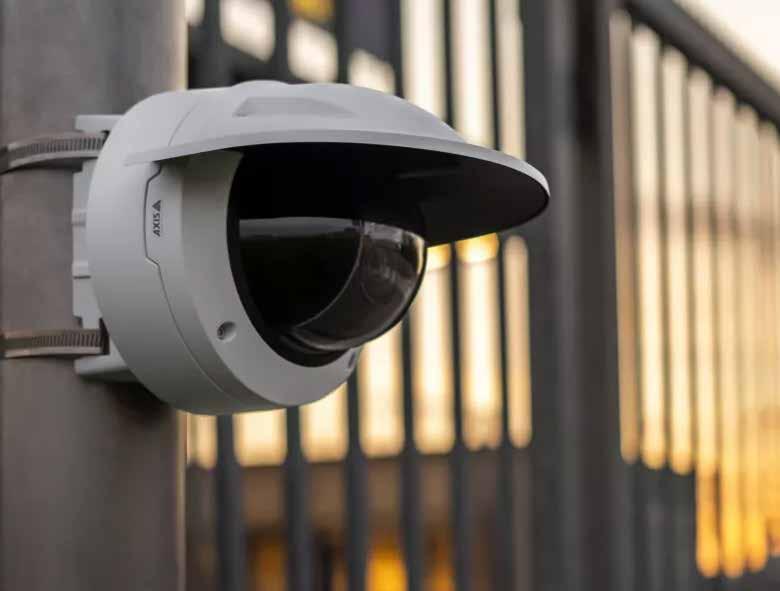


Roszko, JAGGAER
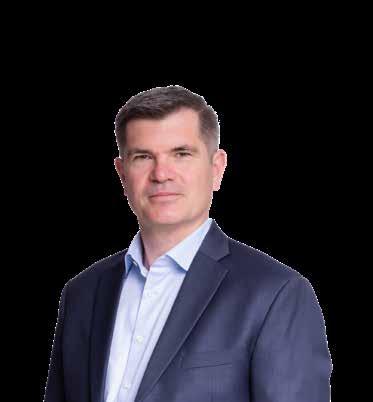
JAGGAER has announced the appointment of Andrew Roszko as the company’s new Chief Executive Officer. Organisations stand at a pivotal moment as global supply chains grow increasingly complex and demand more resilient, intelligent, and agile solutions.
Andrew’s appointment comes at a time of immense opportunity to meet these challenges head-on.
Andrew brings more than 25 years of executive leadership across the supply chain, SaaS, and enterprise technology sector. He is known for driving strategic growth, customerfirst innovation, and high-performance cultures. His leadership style is grounded in clarity, collaboration, and execution—making him the right leader to guide JAGGAER into its next era of growth and impact. His vision and experience will build upon the company’s strong foundation and guide JAGGAER into its next phase of growth and innovation.
JAGGAER’s roadmap of AI technological innovation will improve outcomes for its customers and promote growth for its people and company.


Tenable announced the appointment of Eric Doerr as Chief Product Officer (CPO). Doerr brings nearly three decades of experience building and scaling security products at some of the world’s most respected technology companies, including Microsoft and, most recently, Google Cloud.
At Tenable, Doerr will lead the company’s global product organisation, overseeing strategy, innovation and execution across its growing cybersecurity portfolio.
Doerr most recently served as Vice President of Security Products at Google Cloud, where he led a broad portfolio including Google SecOps (formerly Chronicle) and Google Threat Intelligence, as well as the Mandiant integration. Prior to Google, he spent more than 20 years at Microsoft in senior leadership roles across the security and identity space, including General Manager of Microsoft Account and Corporate Vice President of Cloud Security and the Microsoft Security Response Center (MSRC).
“Tenable is transforming how organisations think about and reduce cyber risk,” said Doerr. “It’s forward-thinking approach to exposure management and its rapid innovation in cloud security make this an incredibly exciting time to join. I’m thrilled to be part of a team that’s building the future of cybersecurity.”


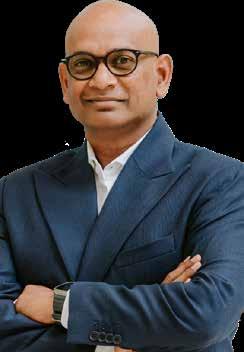

NTT DATA announced the appointment of Asokan Moodley as Head of GenAI and Industry Advisory for Middle East and Africa (MEA).
Moodley will spearhead NTT DATA’s artificial intelligence initiatives across the MEA region, focusing on client-facing offerings, AI-driven delivery, thought leadership, and enterprisewide skilling. Additionally, he will serve as an industry advisor for vertical client engagements, focusing on the financial services industry and public sector.
Moodley brings over three decades of IT experience to NTT DATA. His accomplishments include implementing transformative AI solutions that enhance customer experiences, streamlining operations, and developing guidelines for the ethical use of generative AI in banking. He has also led strategy, architecture, and design teams across South Africa, managing IT landscapes for 28,000 users across multiple locations.
The role will also see Moodleydevelop and implement strategic plans for NTT DATA’s AI go-to-market approach. He will implement AI solutions to key clients, and provide technical leadership in AI technologies, including machine learning, deep learning, natural language processing, and generative AI.



Forcepoint has announced the appointment of Matt Derdeyn as Chief Financial Officer. A seasoned finance executive with more than 20 years of experience in high-growth technology companies, Derdeyn joins Forcepoint’s executive team as the company scales adoption of its recently launched Data Security Cloud, a complete, AIpowered data security platform uniting visibility and control of data everywhere it’s created, stored or moved.
Derdeyn brings extensive expertise in strategic finance, mergers and business transformation across both public and private equity-backed companies. He most recently served as CFO at Archer Technologies, where he led Archer through a double carve-out from Dell Technologies and RSA Security LLC, its immediate parent, and through a successful multi-billion dollar sale process while simultaneously accelerating organic growth into the double digits. His previous roles include CFO of LionTree and EVP/CFO of Answers Corporation, where he was instrumental in leading a marketing SaaS rollup through multiple acquisitions, and taking point on a dual path IPO/sale process which resulted in a strategic sale to APAX Partners.
At Forcepoint, Derdeyn will oversee financial strategy and operations, supporting the company’s continued momentum as the first cybersecurity company purpose-built to secure data exactly when it matters—through context-aware, AI-driven insights and controls that adapt in real time.
Take an inside look as leaders examine how emerging market trends like AI and changing customer expectations are transforming marketing strategies and campaign tactics

Currently we are witnessing an increasing number of companies transitioning to the cloud and worrying about online security. This raises the marketing focus. Many companies now require robust cybersecurity and SOC services that operate effectively in the cloud. Therefore, the focus is shifting on publishing valuable, accessible content, supporting the learning process, and creating trust. Our vision is to support businesses’ transition to digital and to ensure that they are protected from the growing threat of cyberattacks.
AI is assisting us in improving our services and marketing. We are using AI to leverage better customer insights and serve the right messages to the customers at the right time. As faster and smarter is now being expected, we are trying to showcase our speed in detecting threats, automated response capabilities, and ability to protect cloud systems. We want the customers to feel more secure and confident leveraging our services in a rapidly evolving digital landscape.

One of the key trends shaping our marketing strategy is the shift towards AI, sustainability, and hybrid work. Customers now expect solutions that are intelligent, adaptable, and environmentally responsible. We’re focusing on aligning our messaging with these evolving needs, offering real value and engaging experiences that resonate with today’s rapidly changing business environment.
We’re really leaning into AI in our campaigns, not just as a topic, but as a tool to better understand and connect with our audience. We’re adapting by making our messaging more personal and interactive, and we’re helping customers stay ahead of these changes with useful resources, events, and tips. It’s all about making sure we’re supporting them in a way that feels relevant and meaningful.
